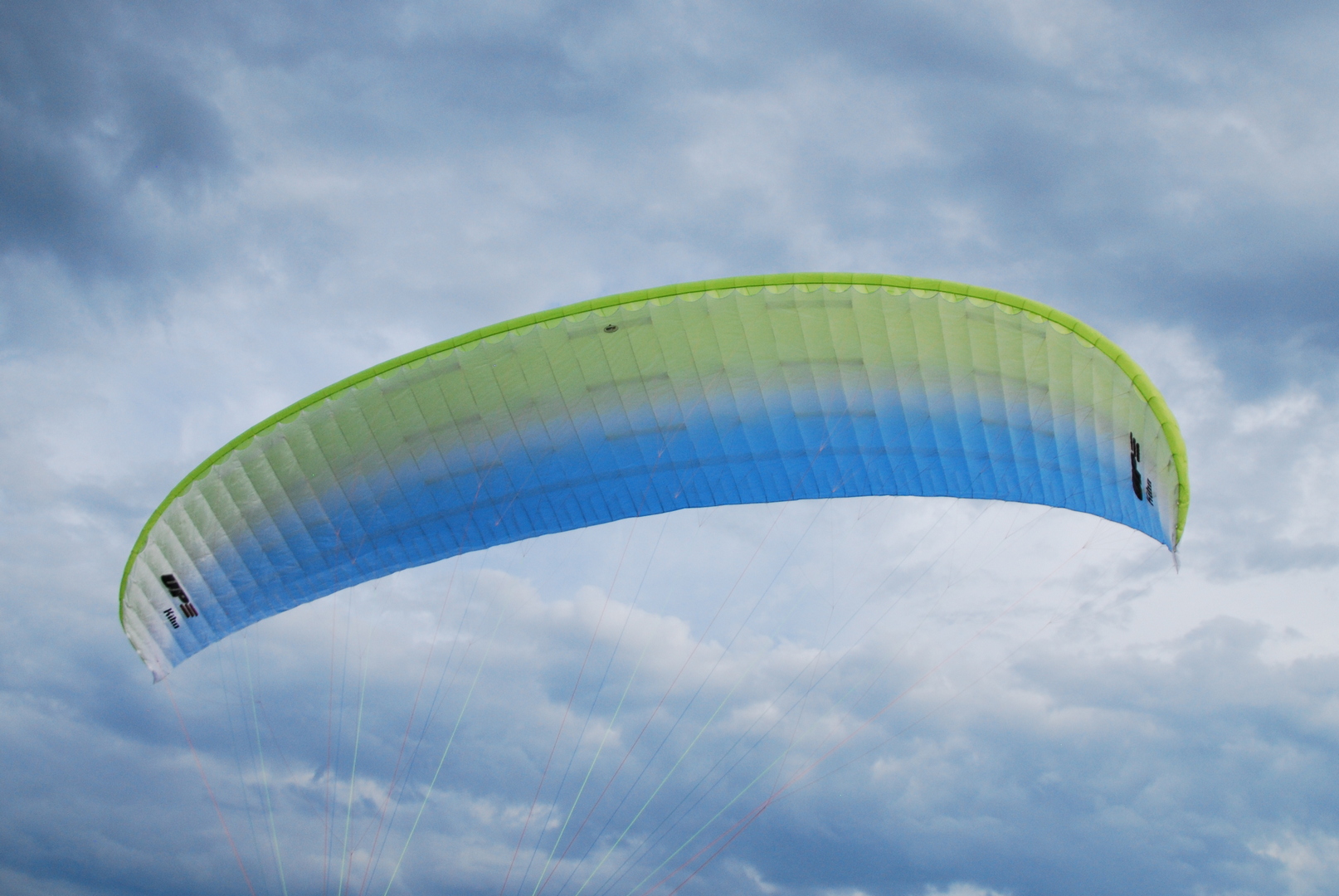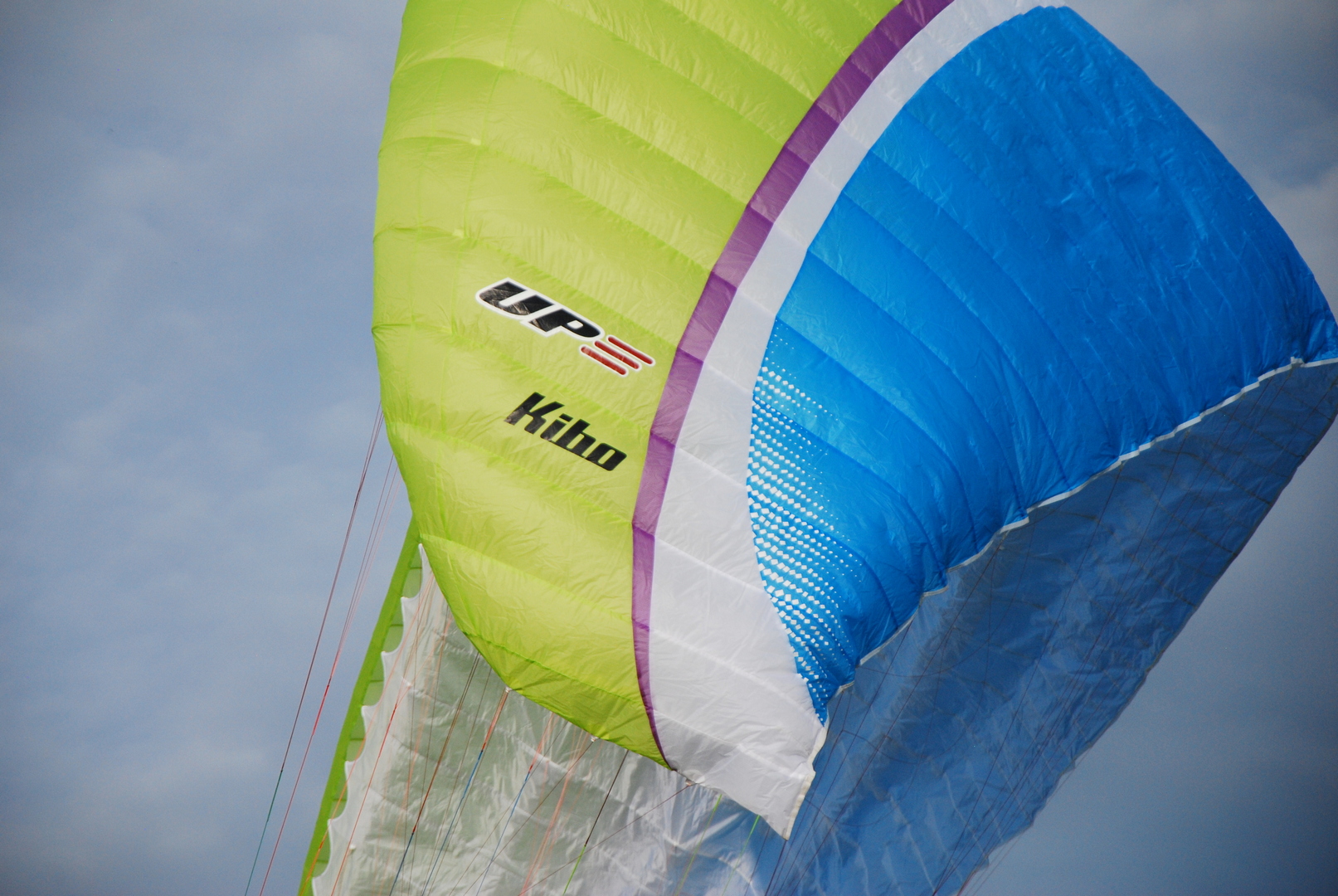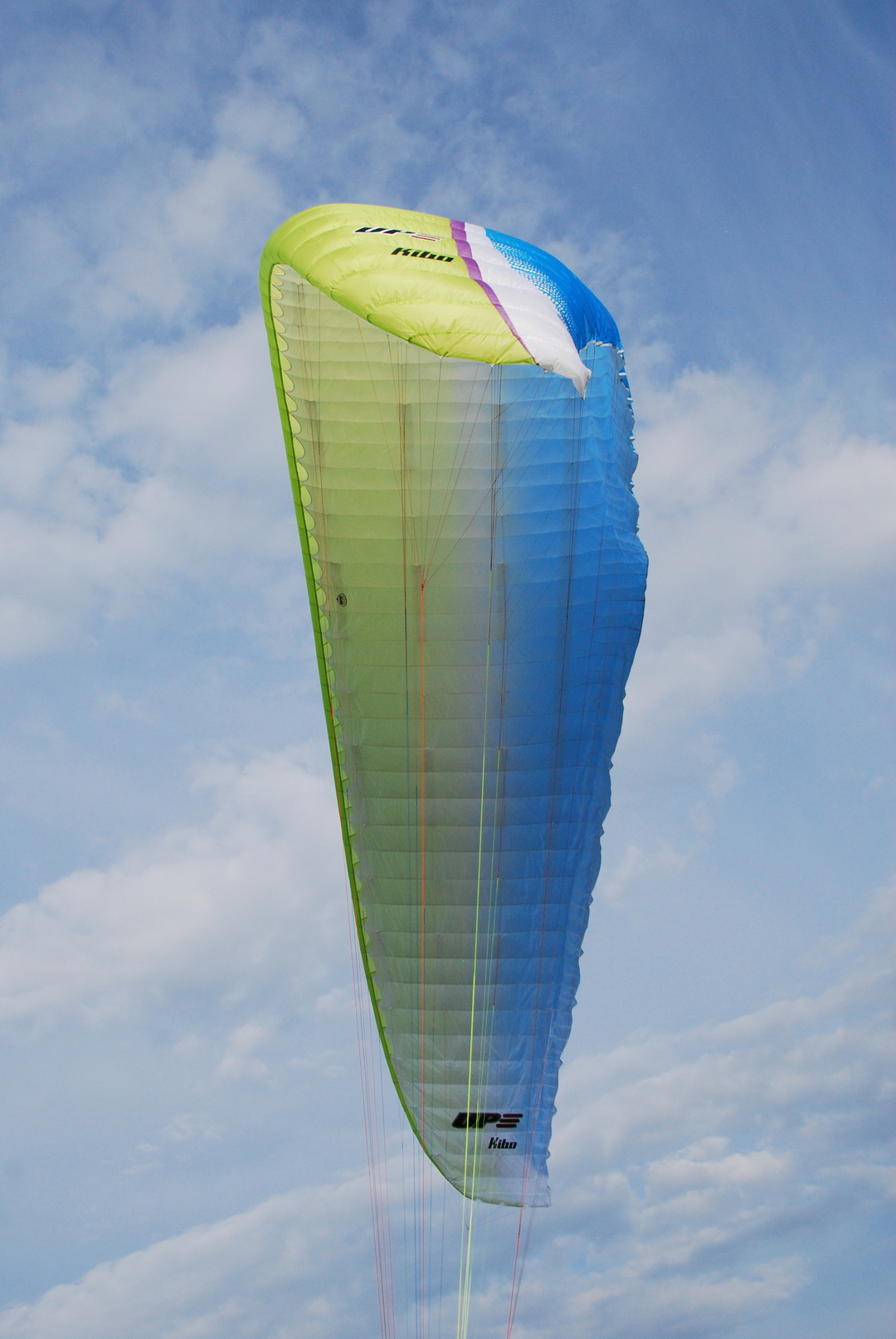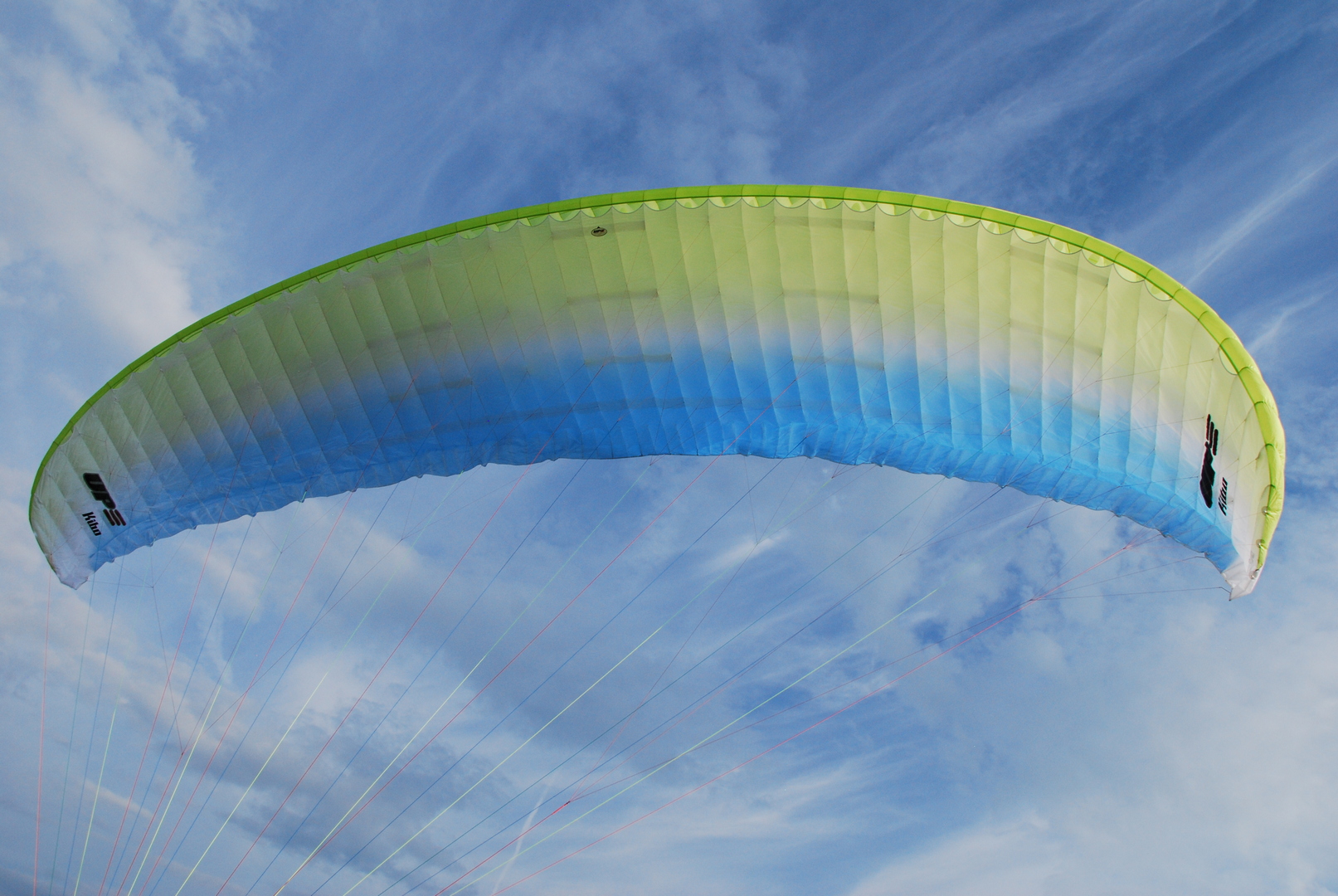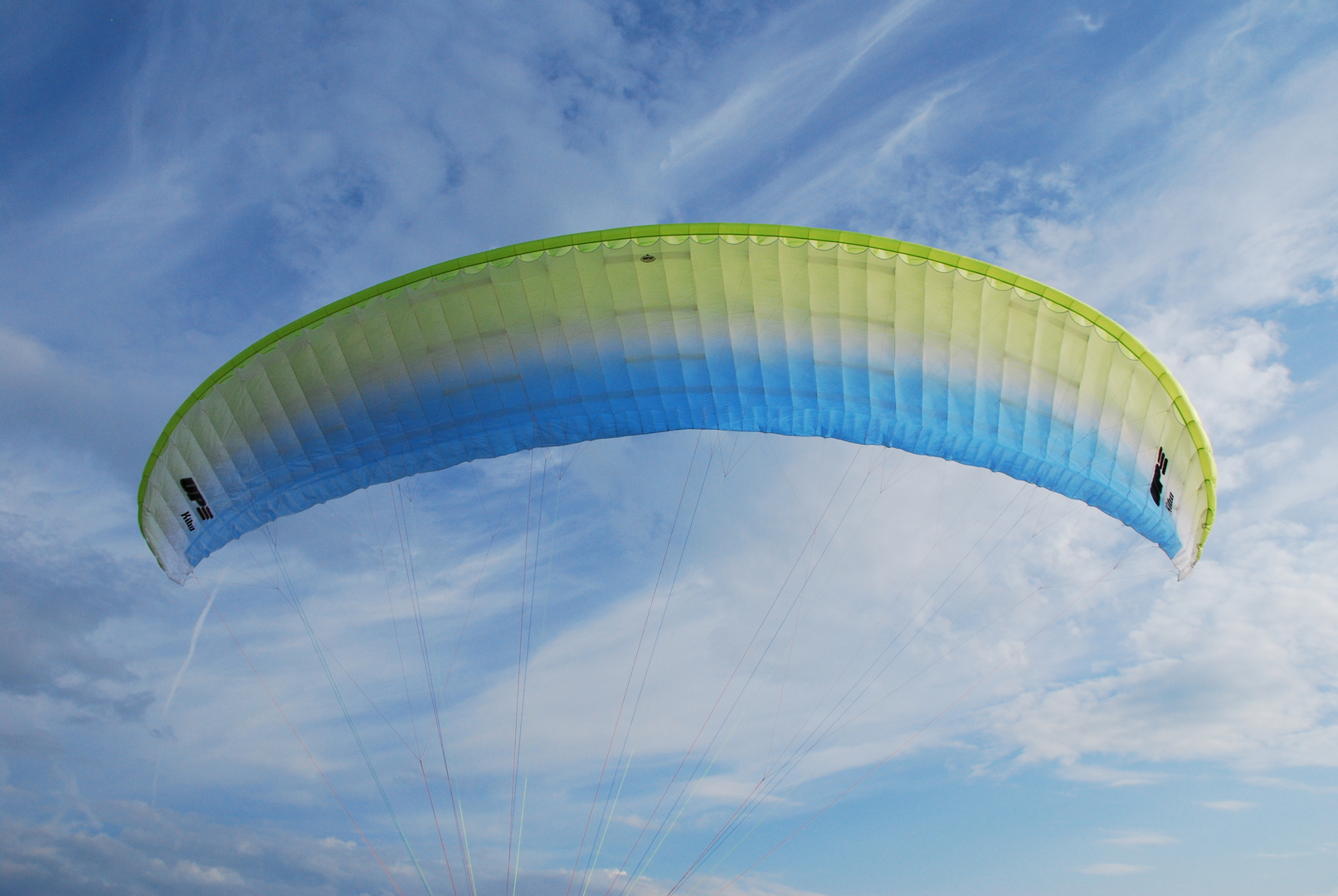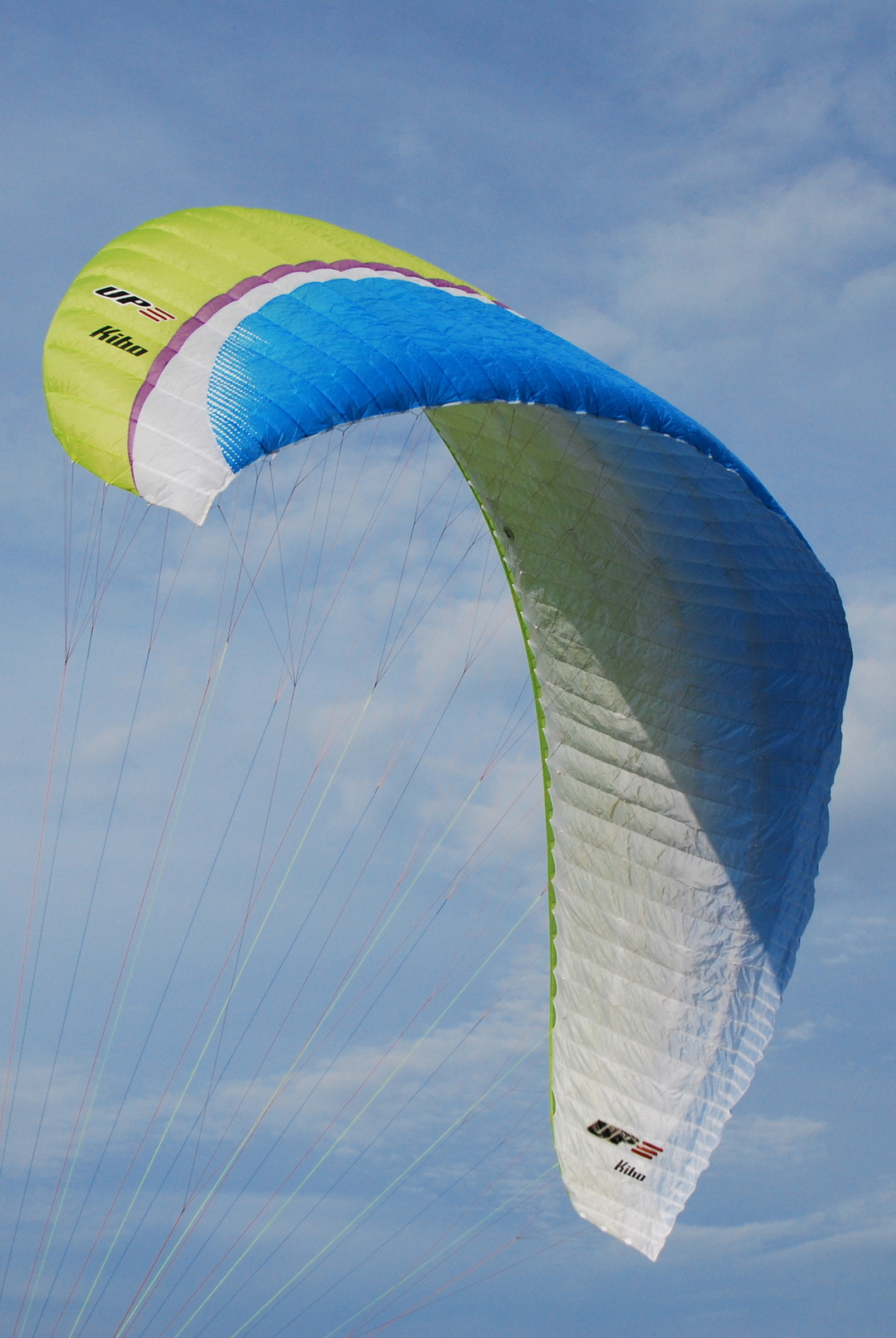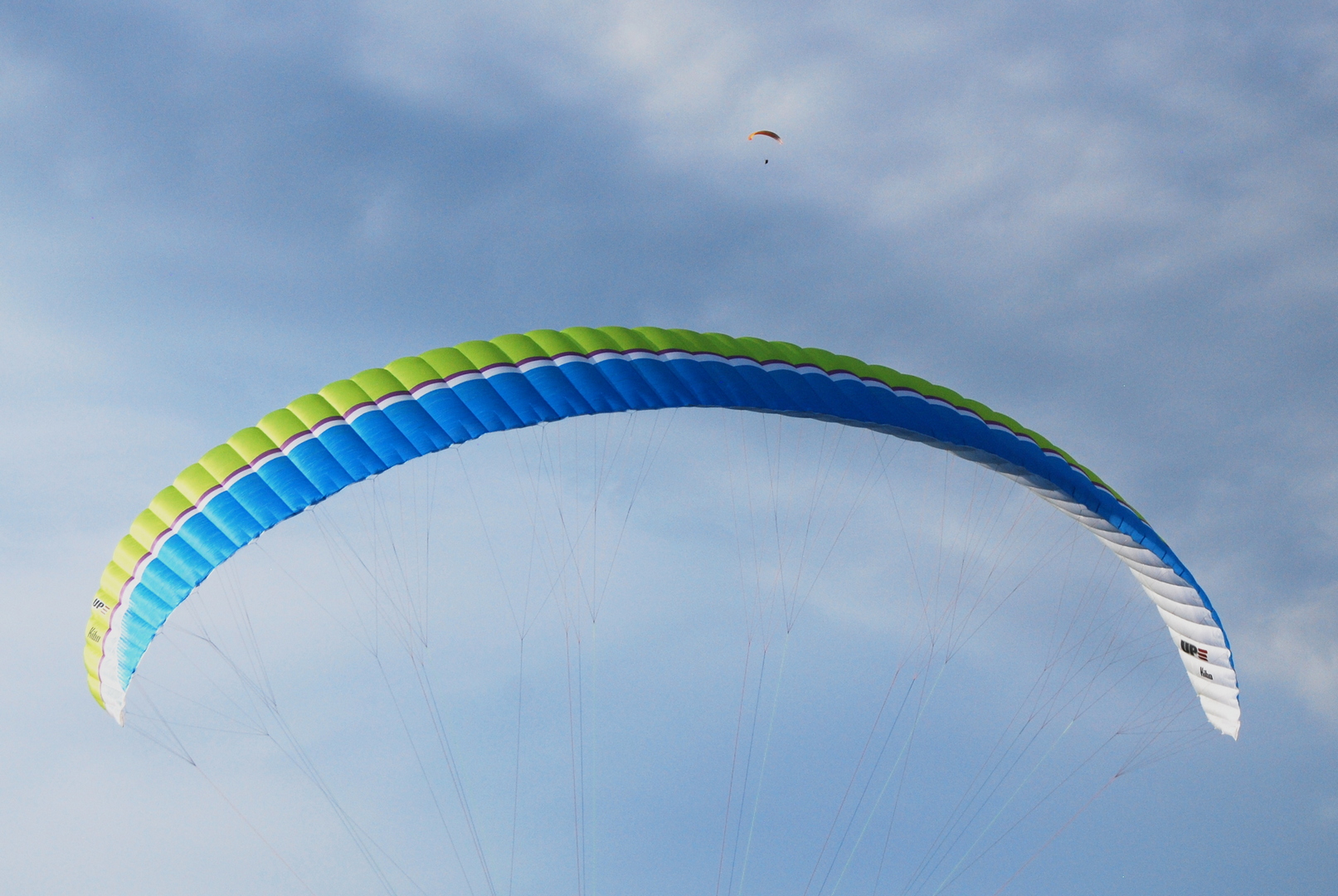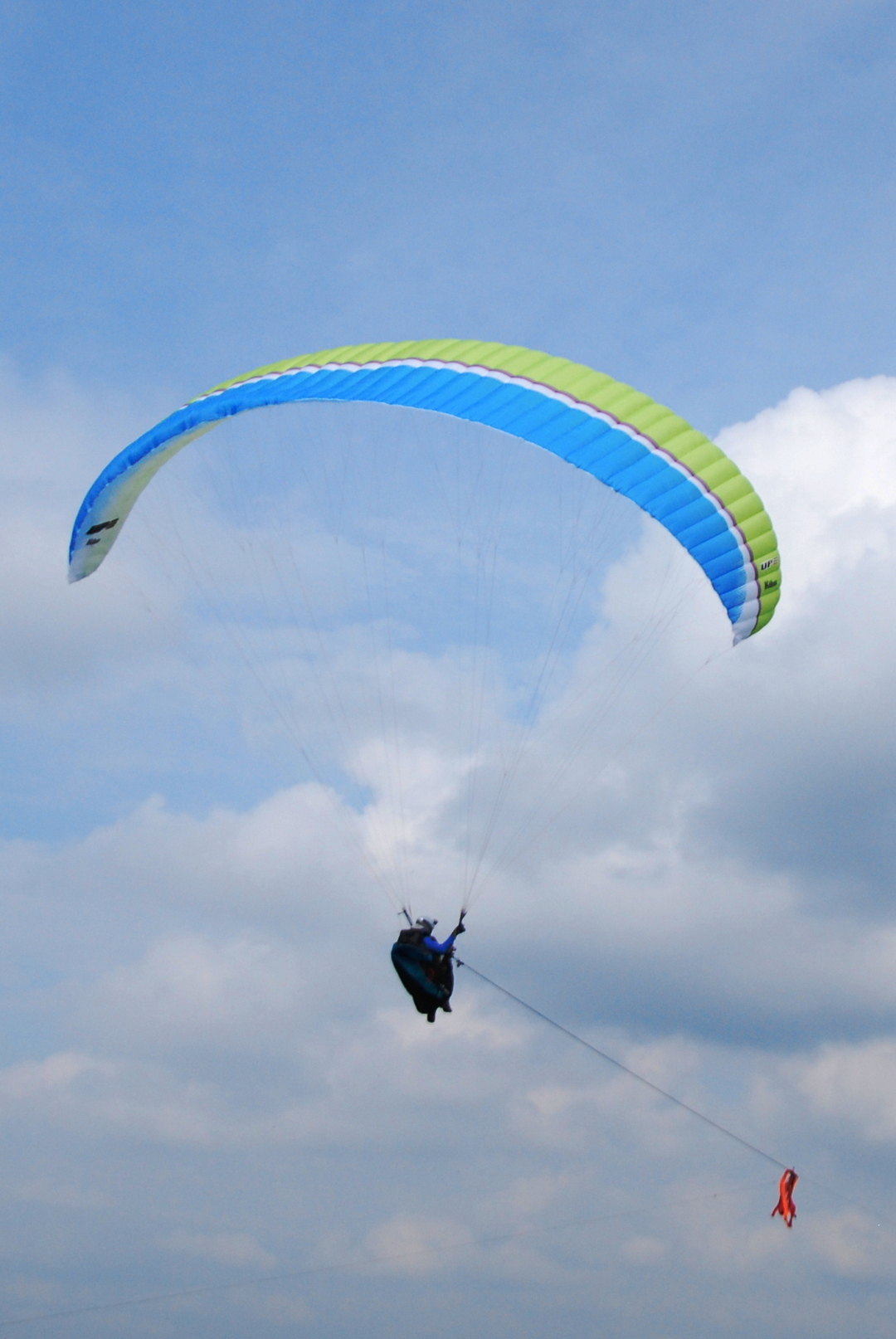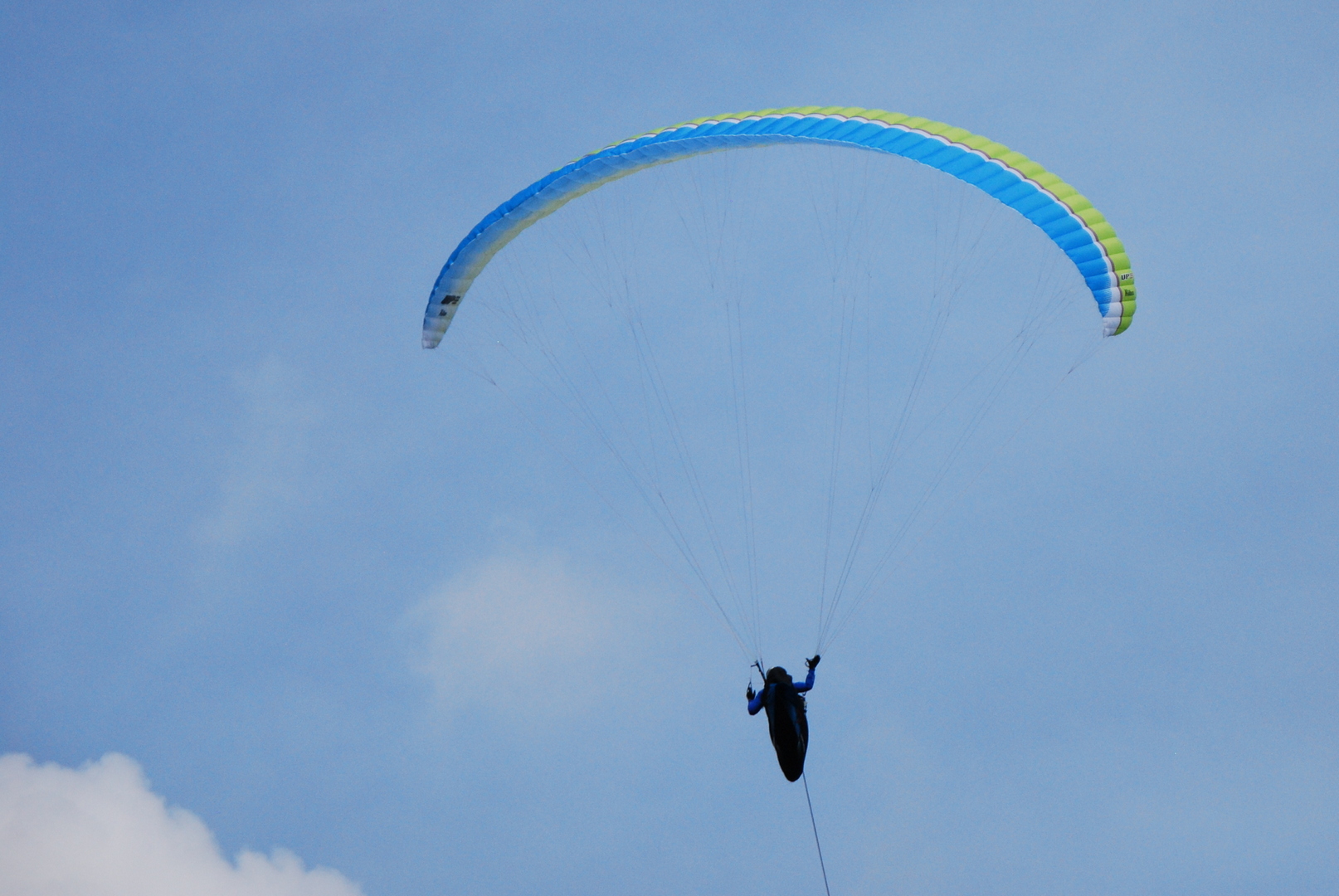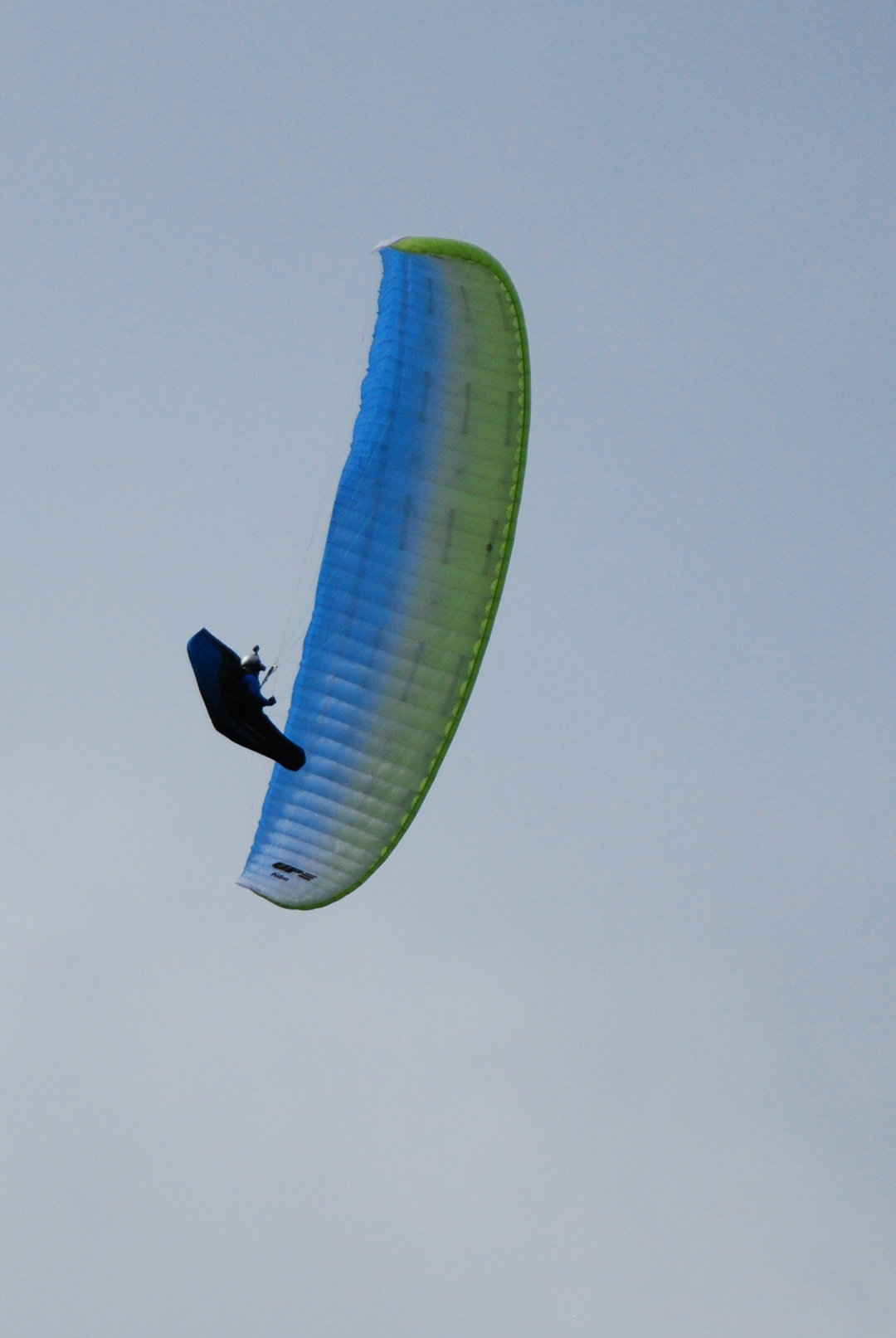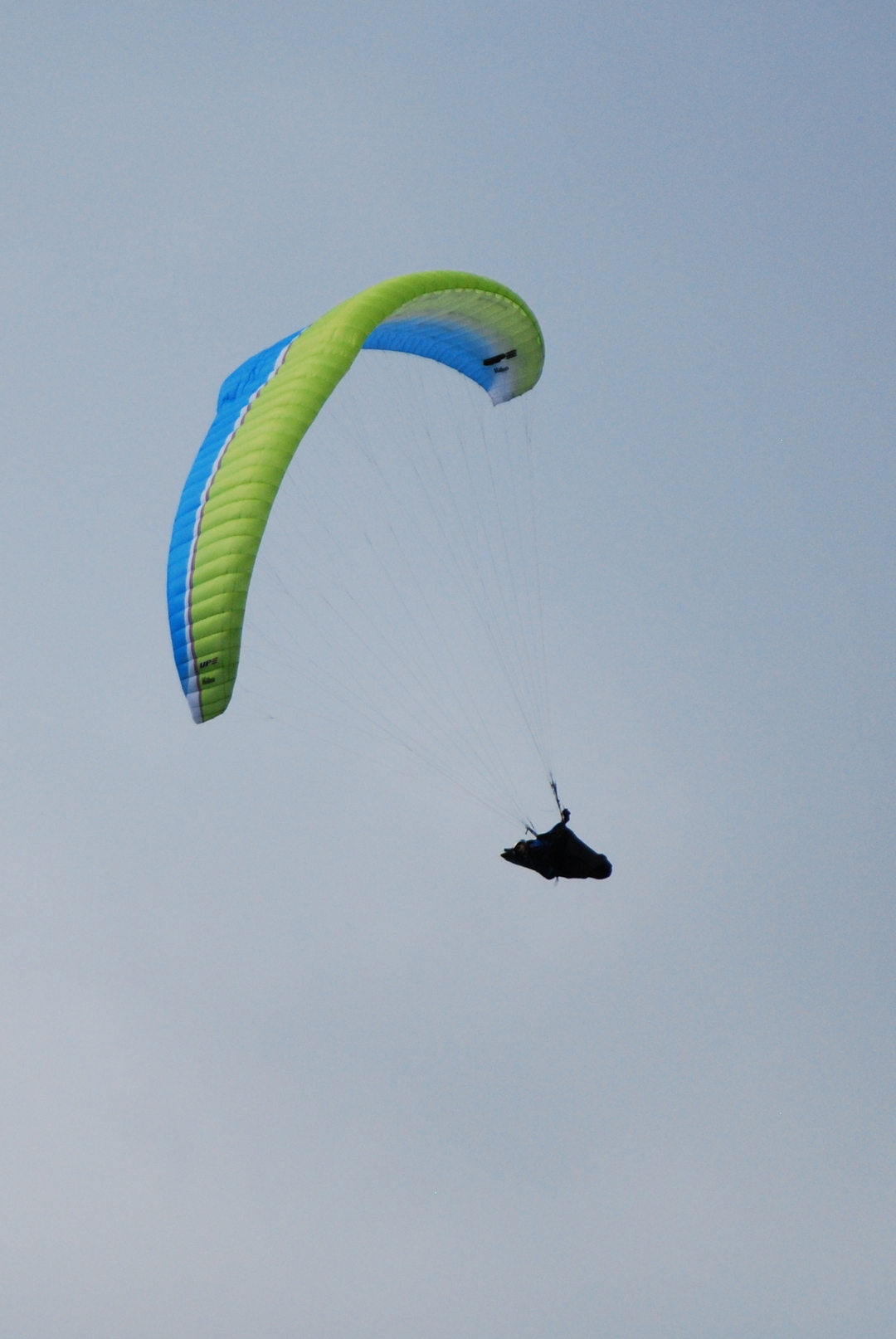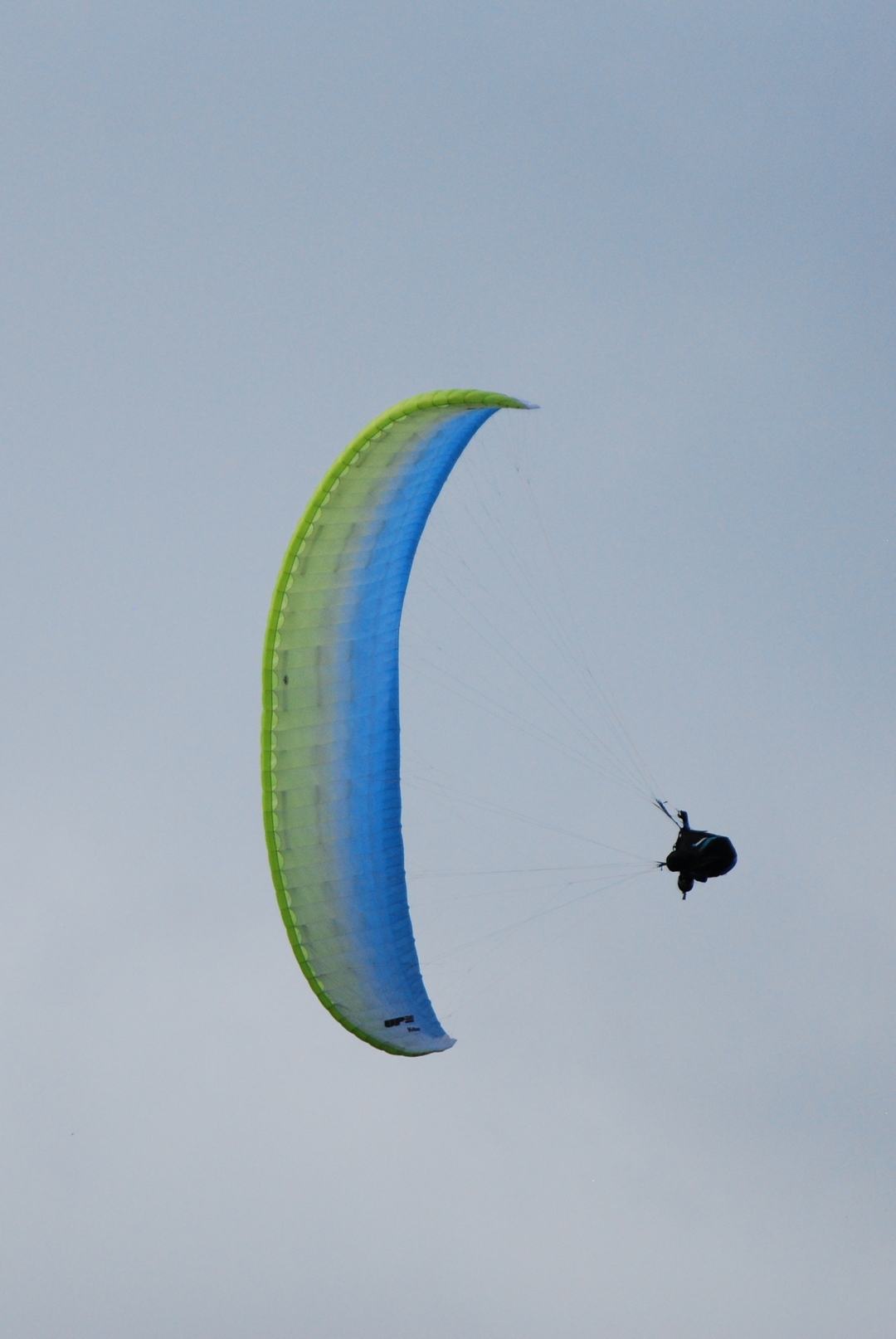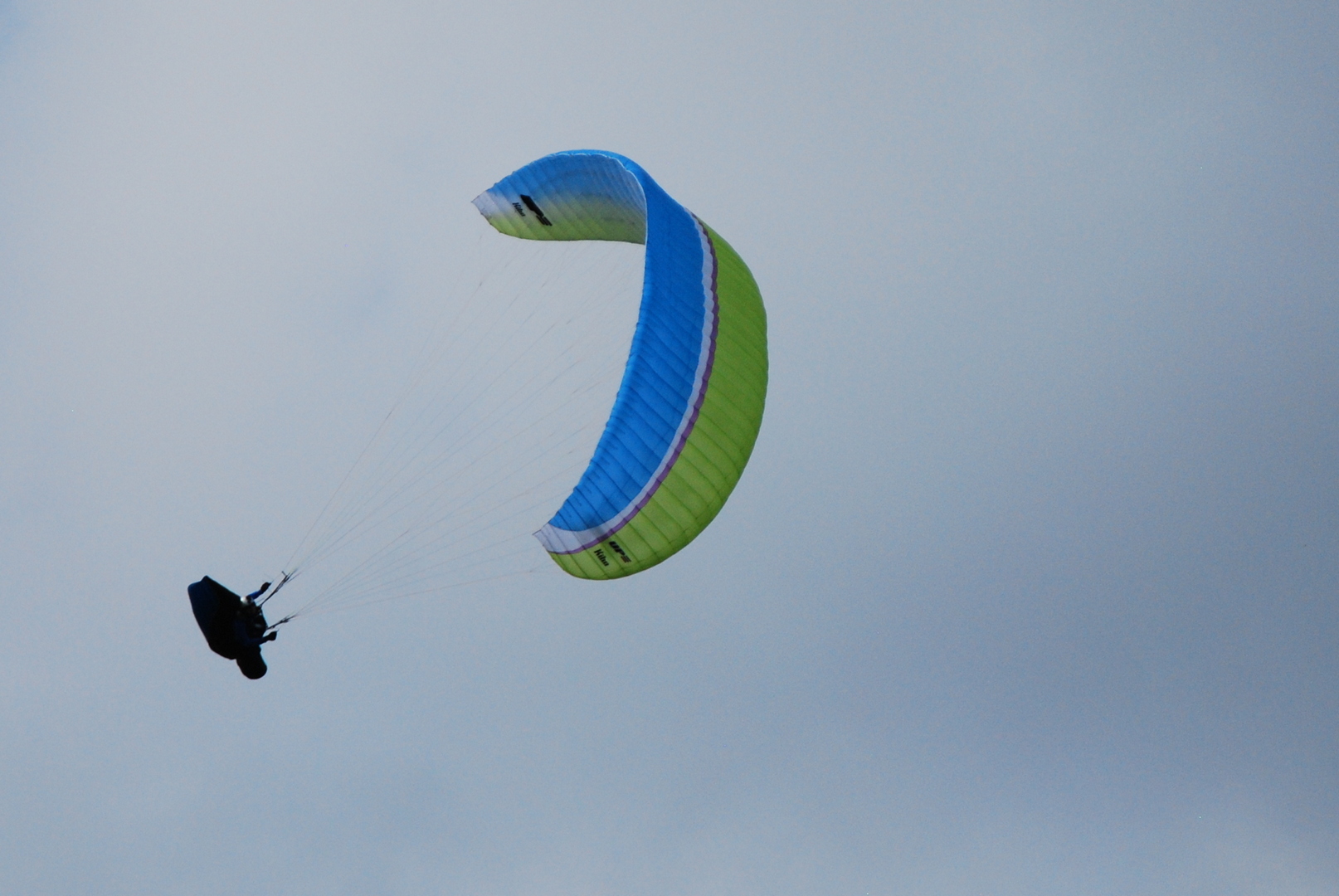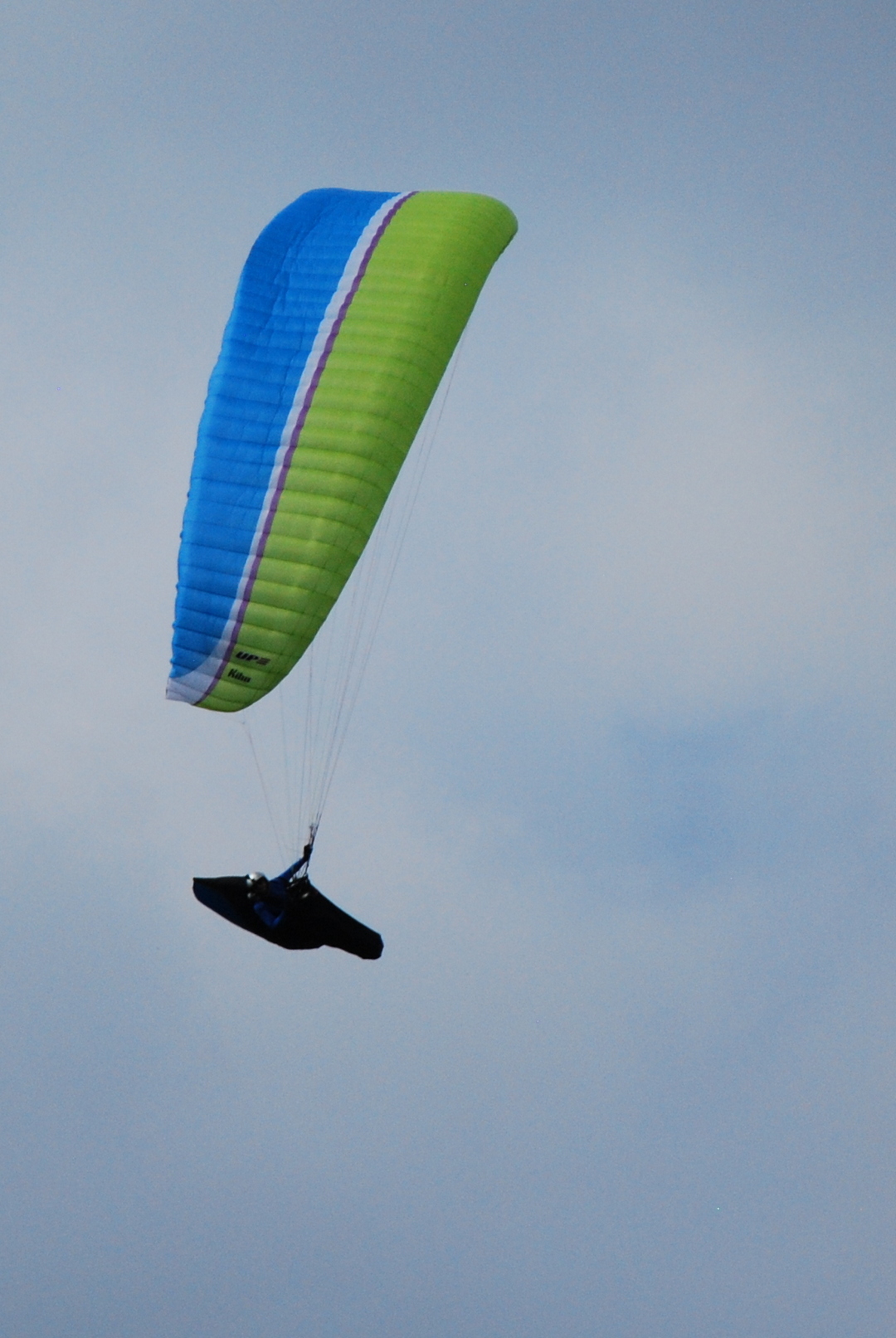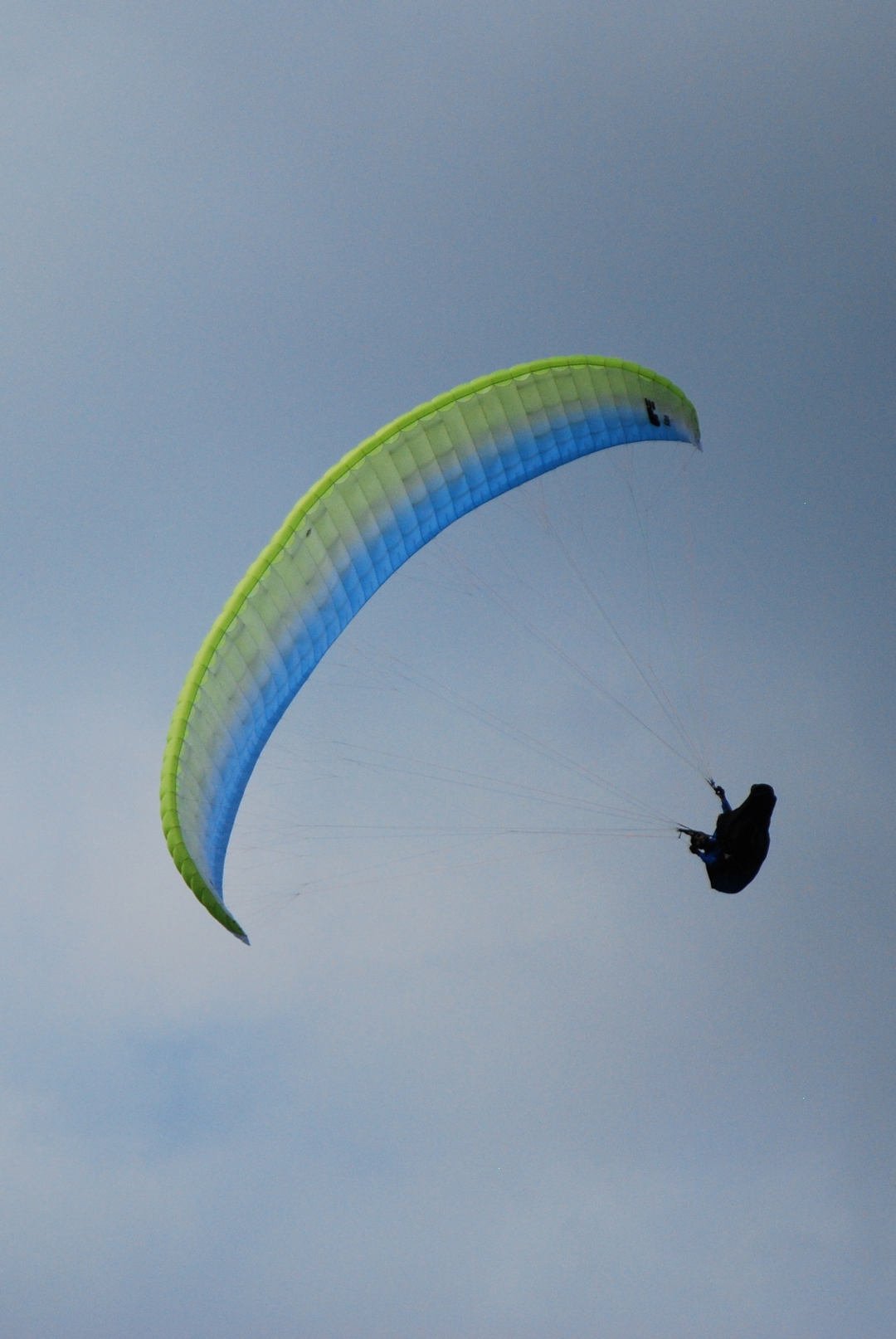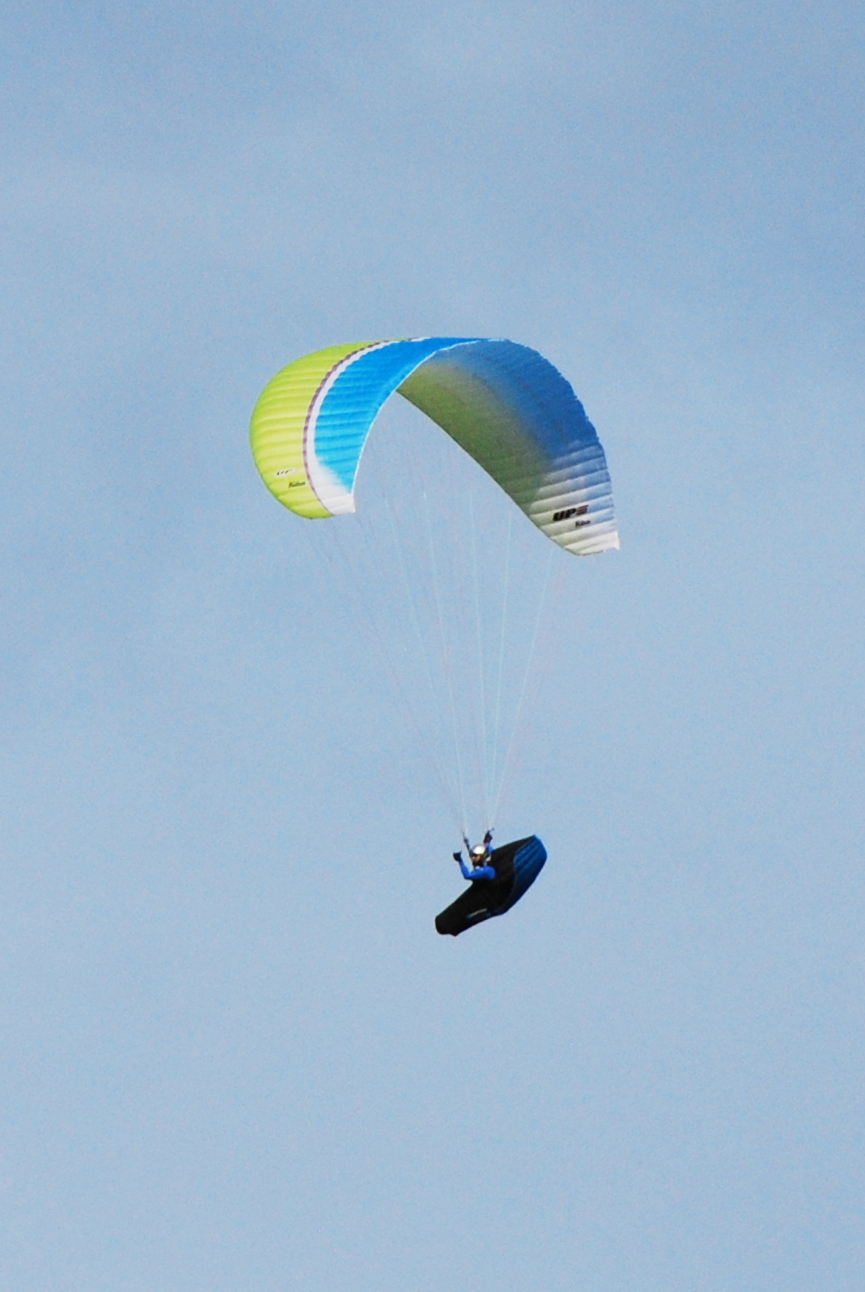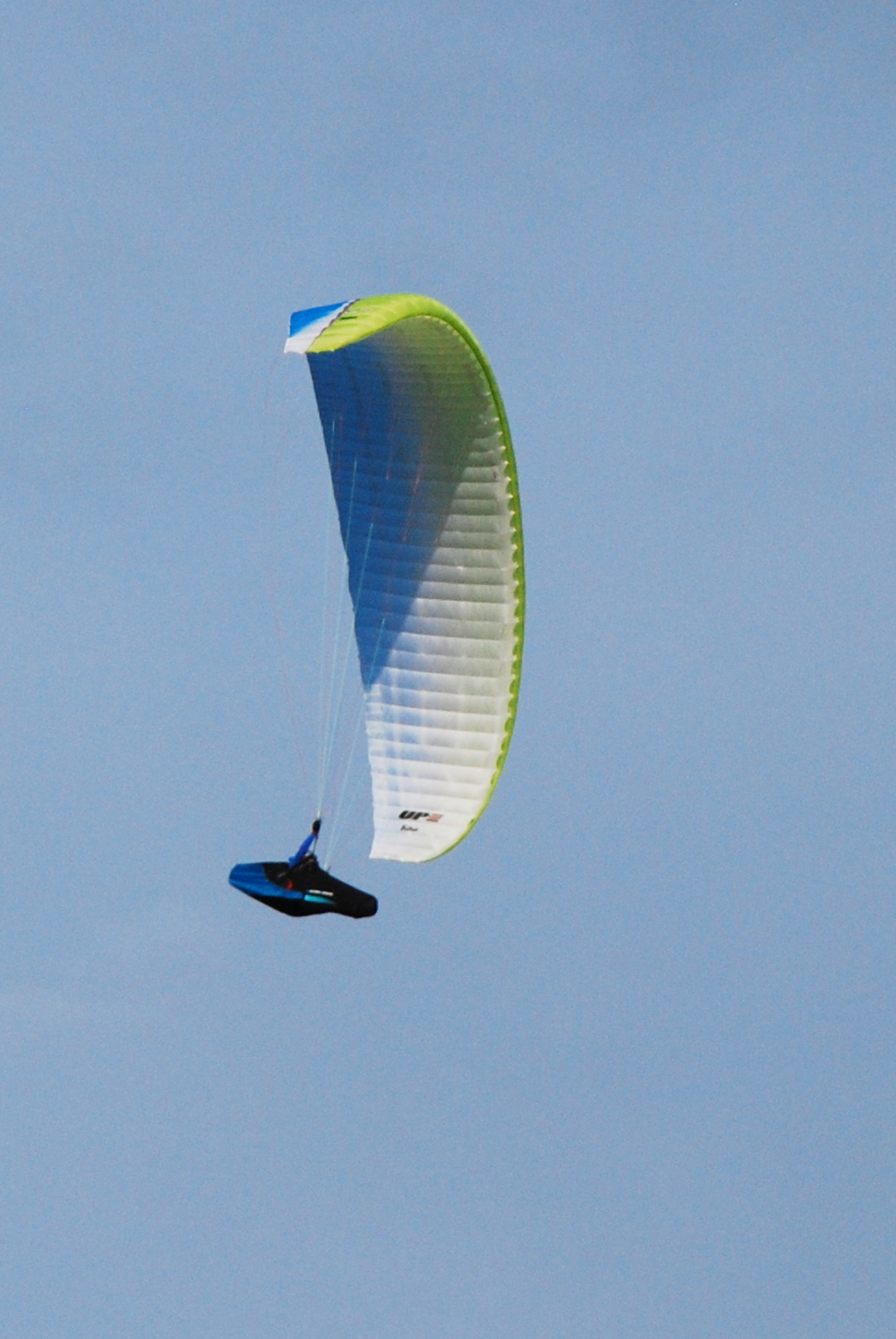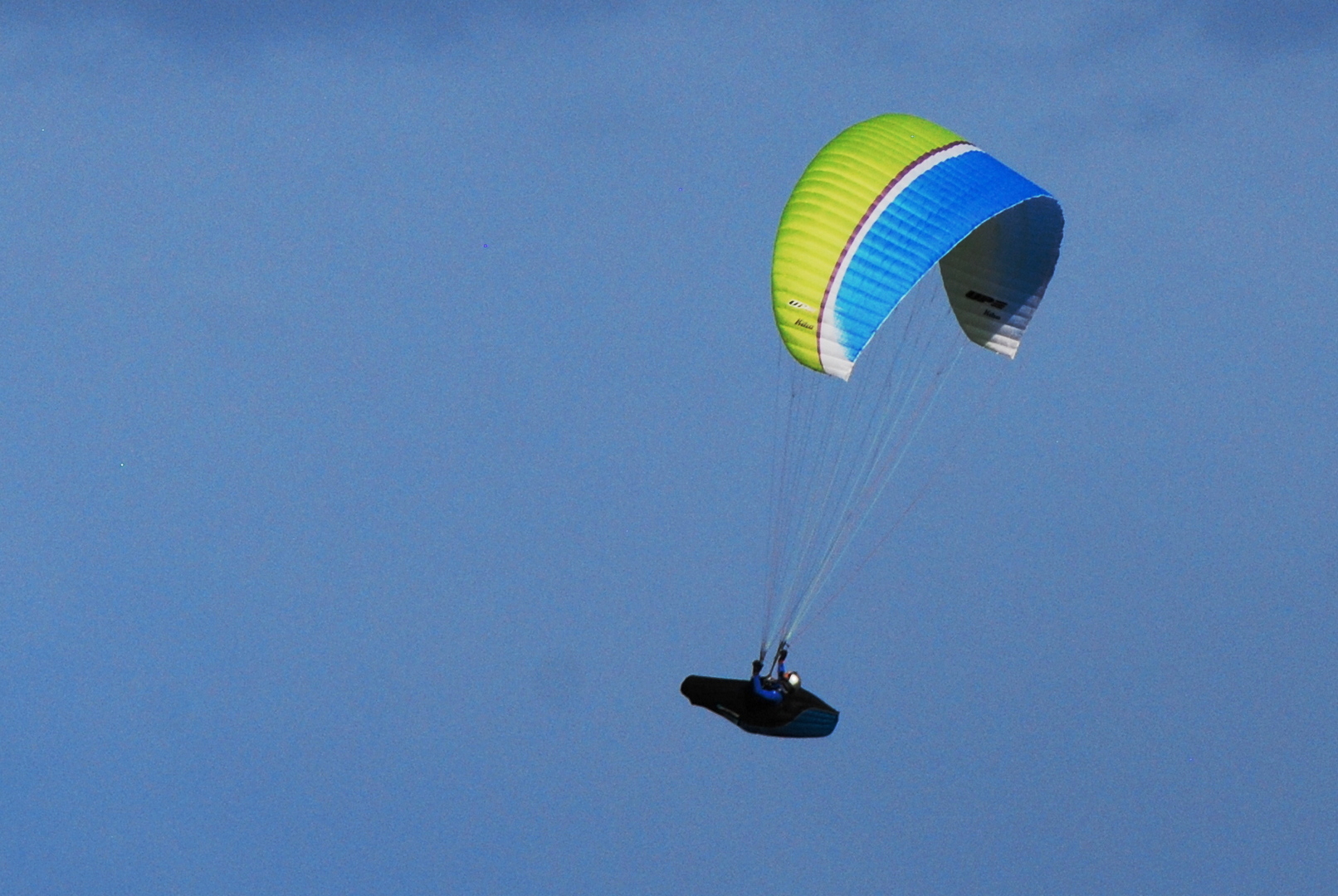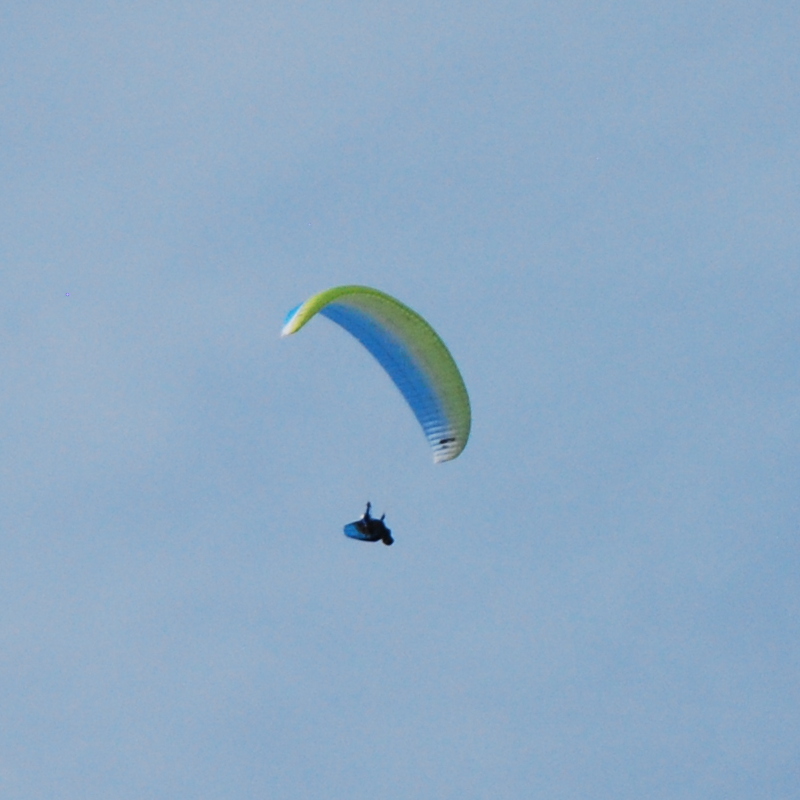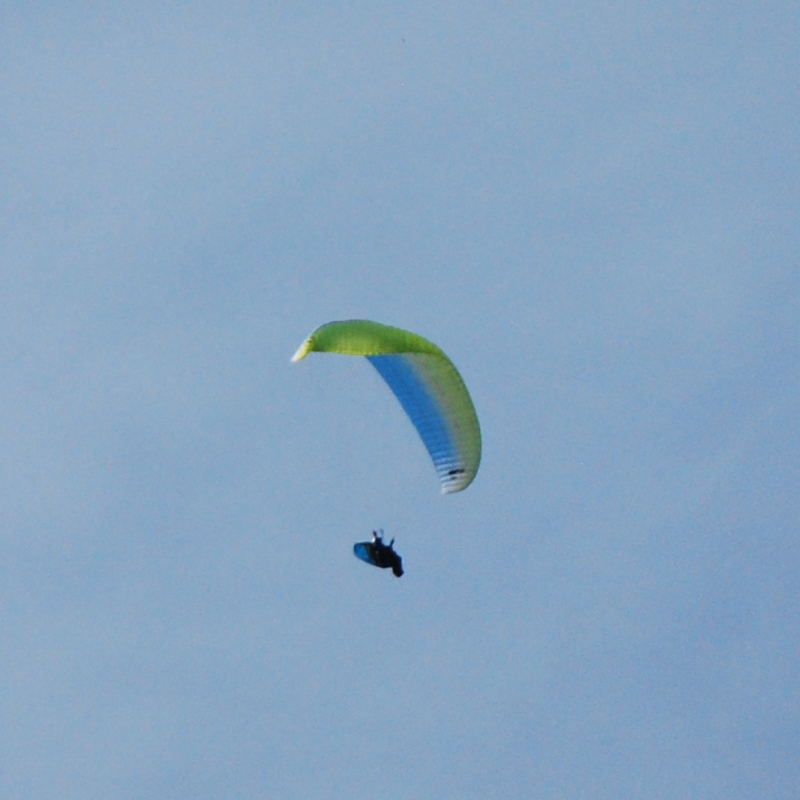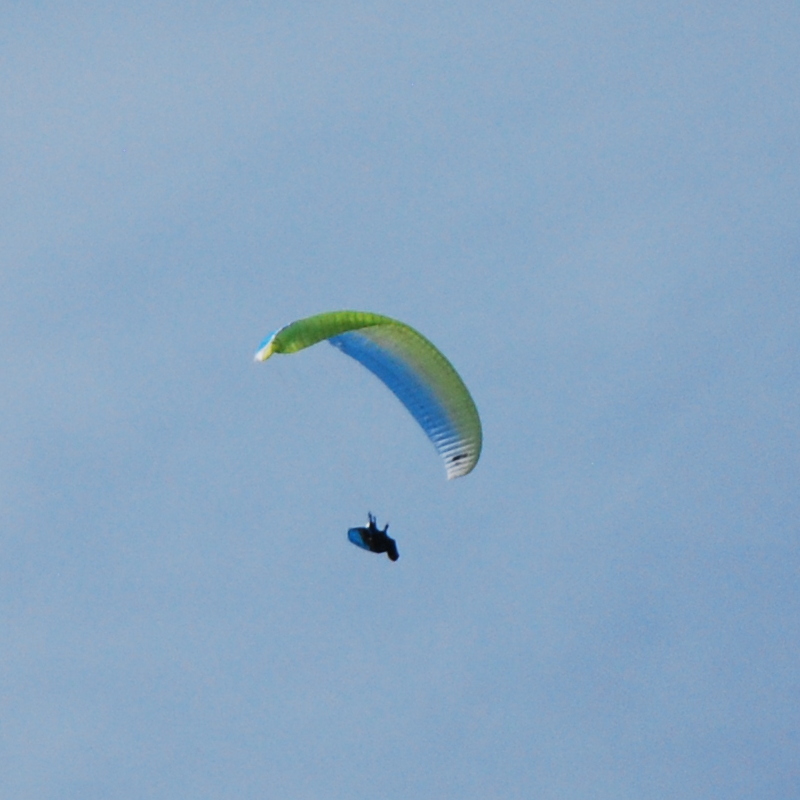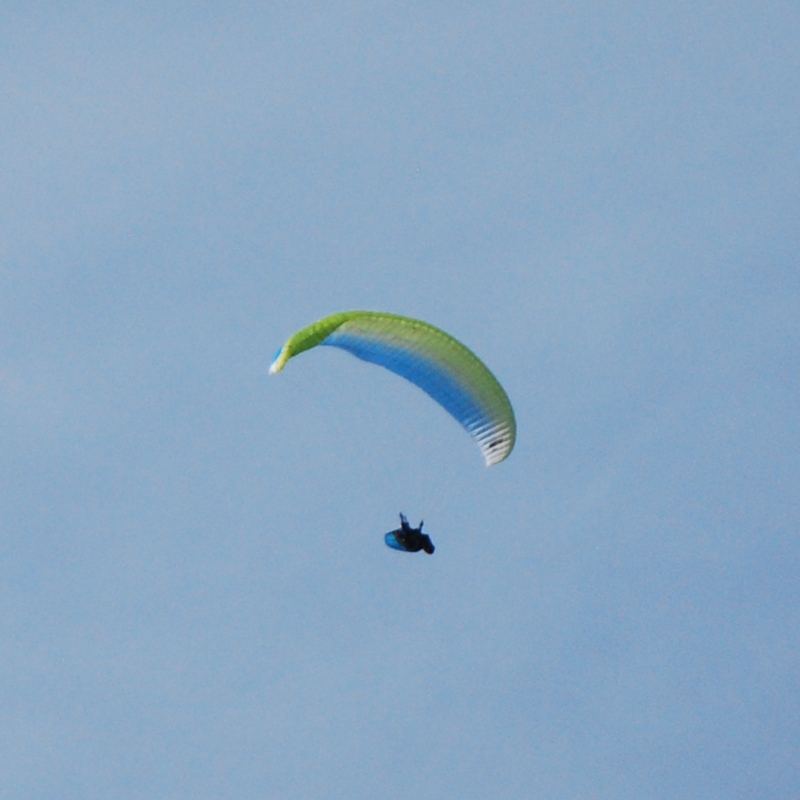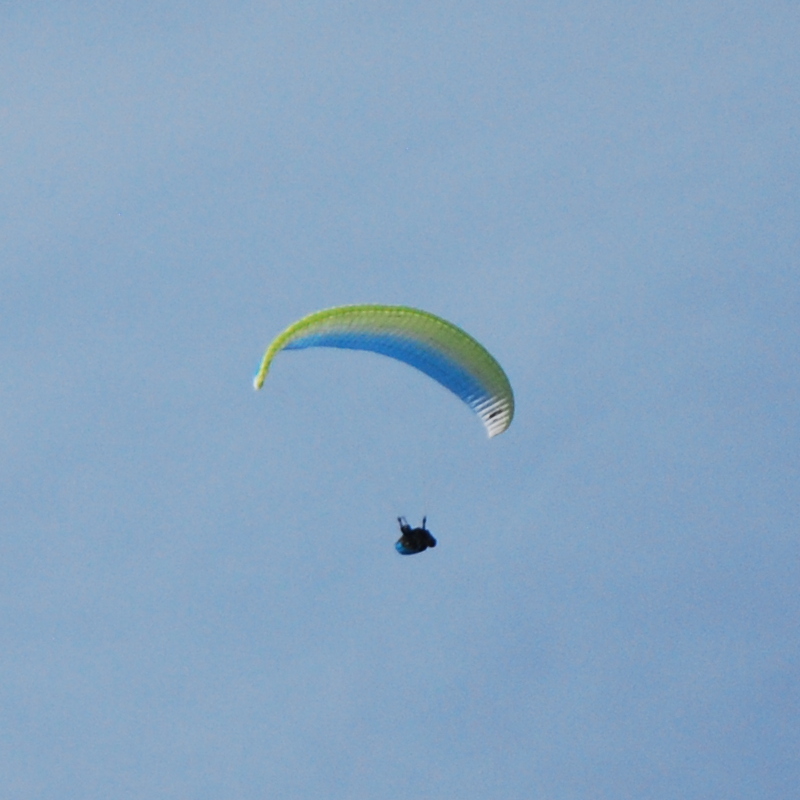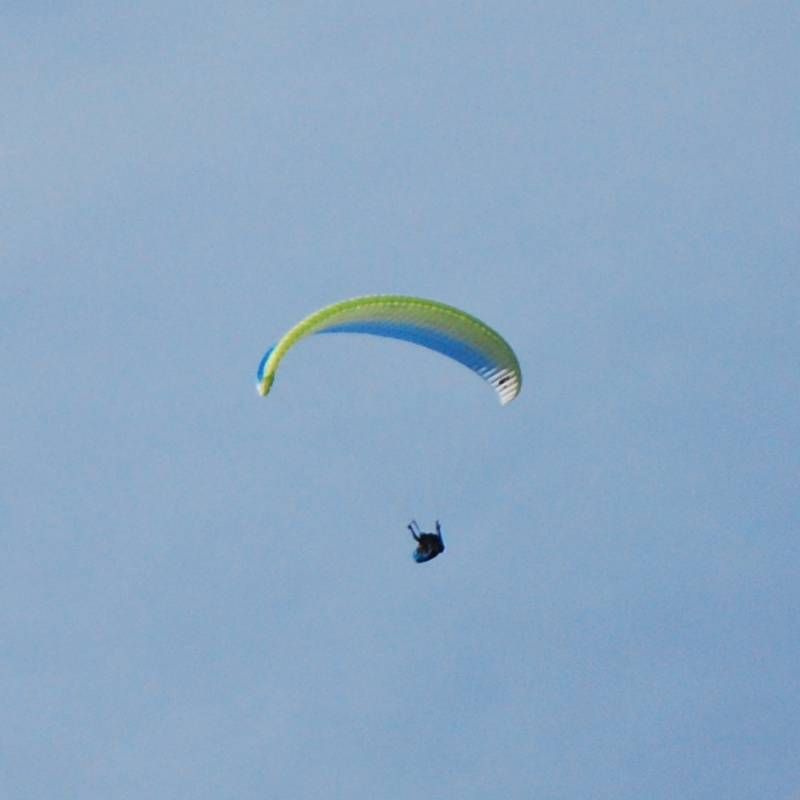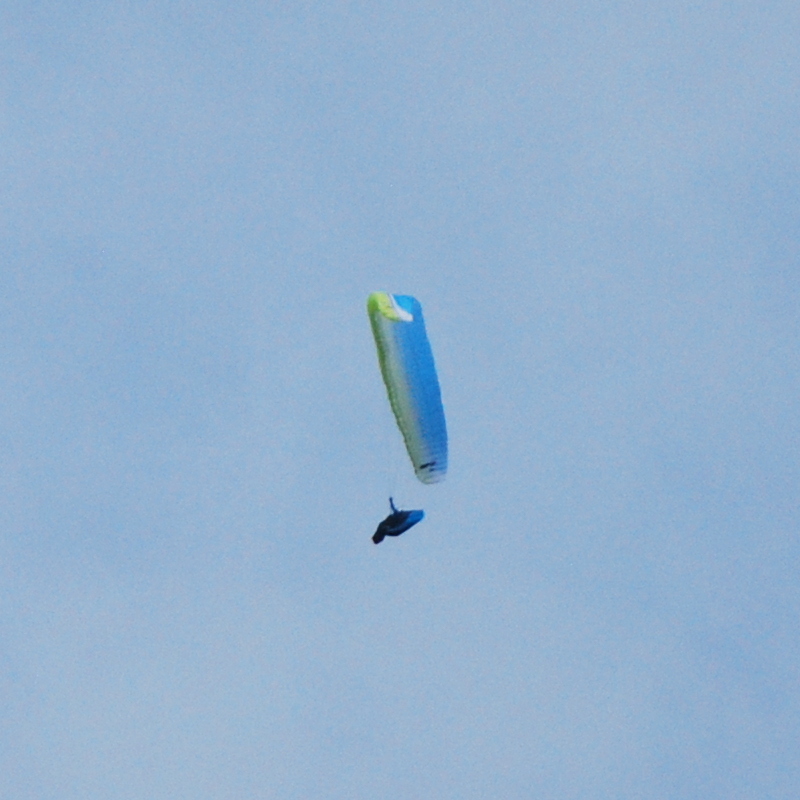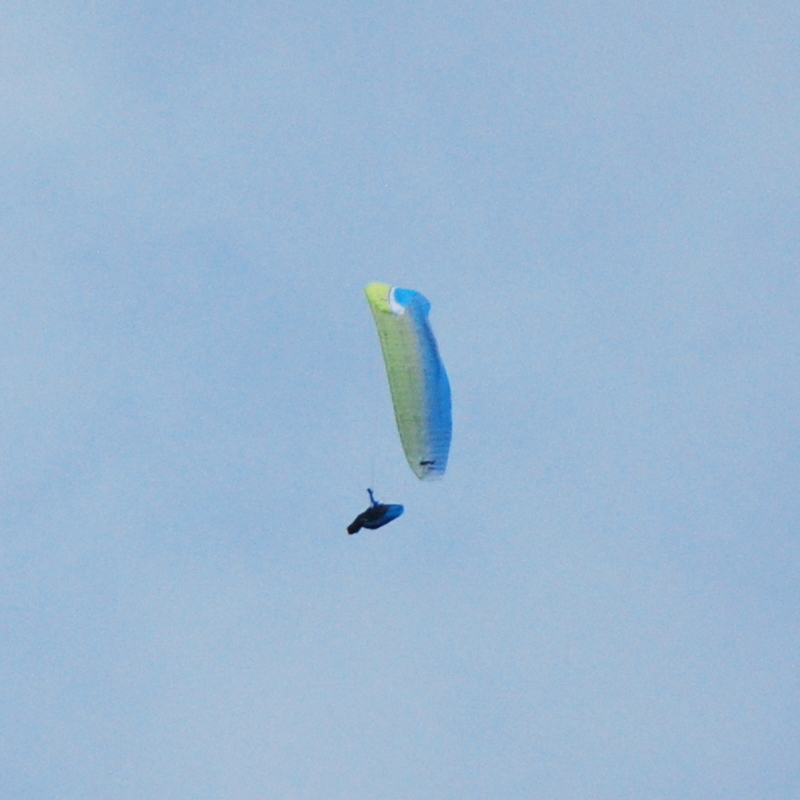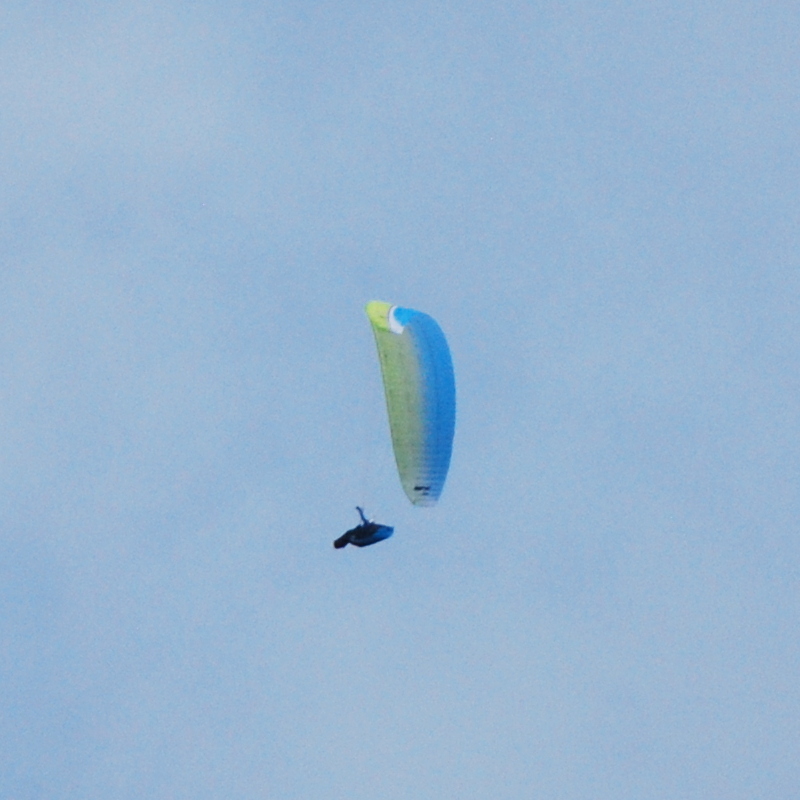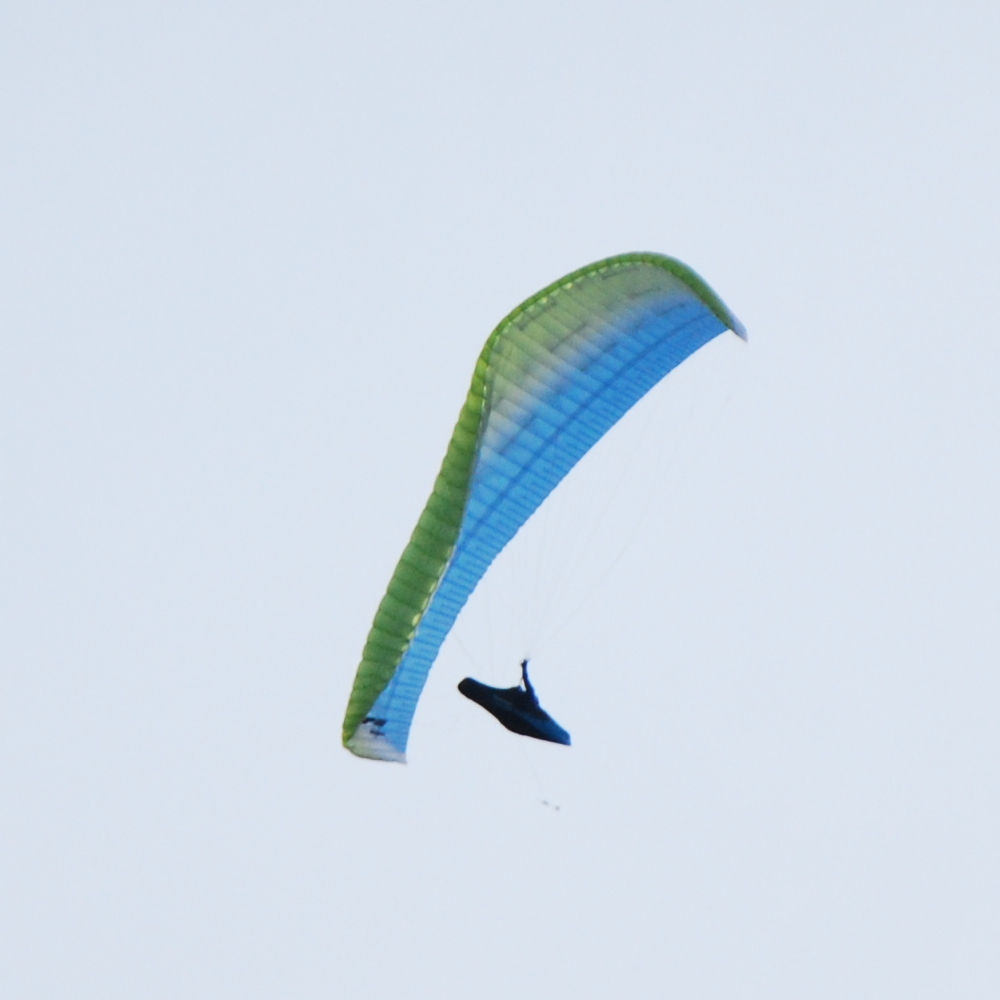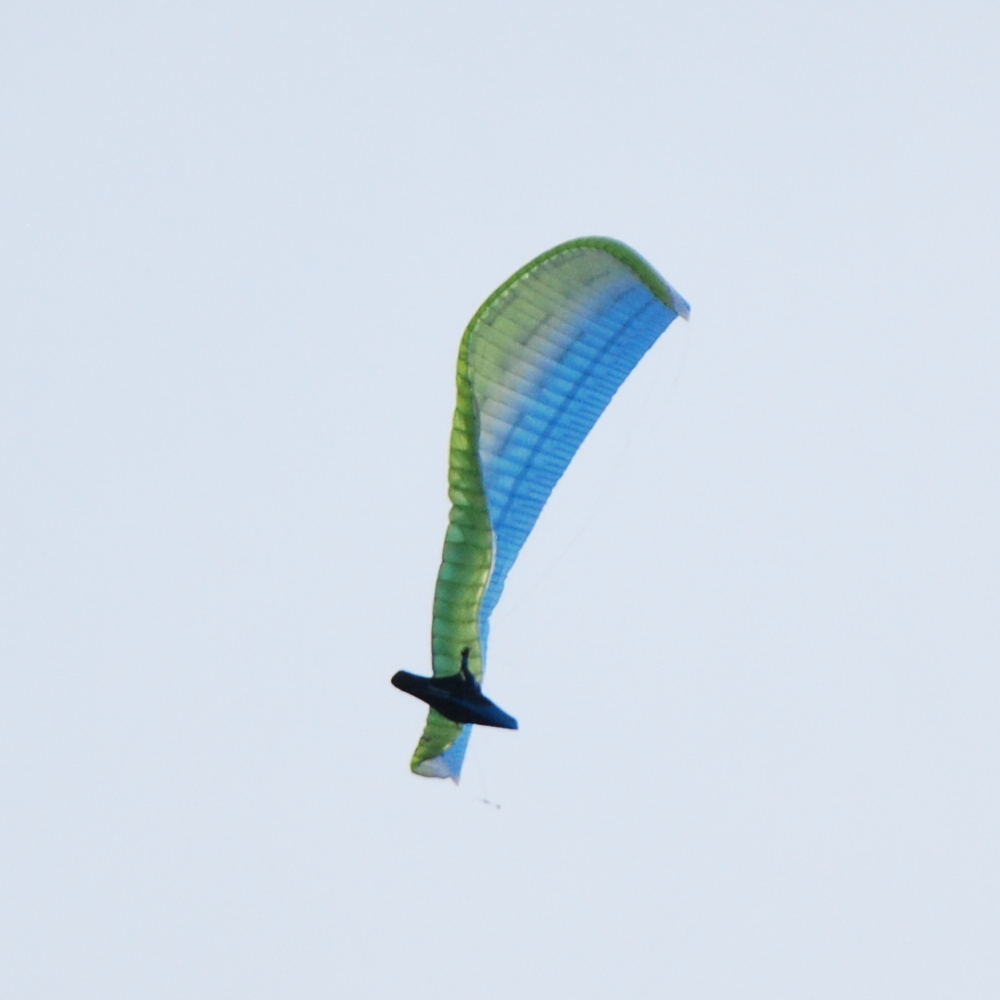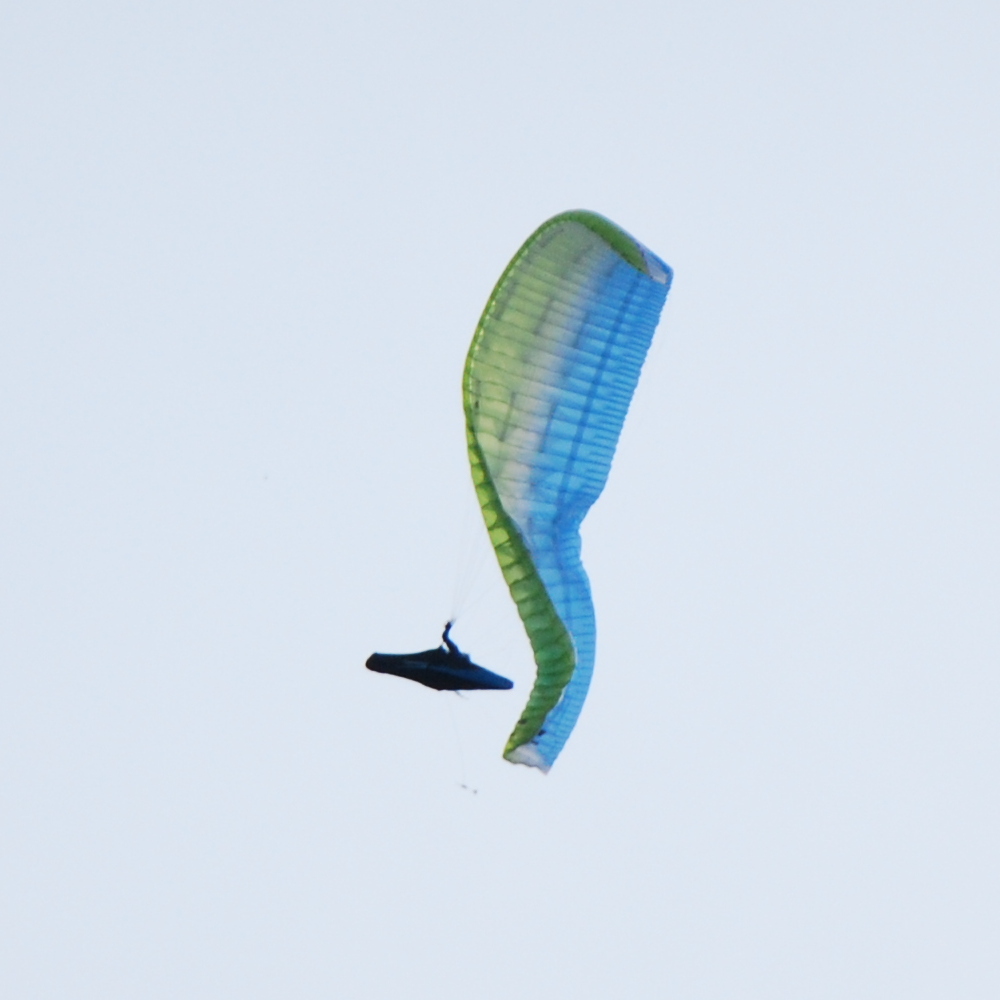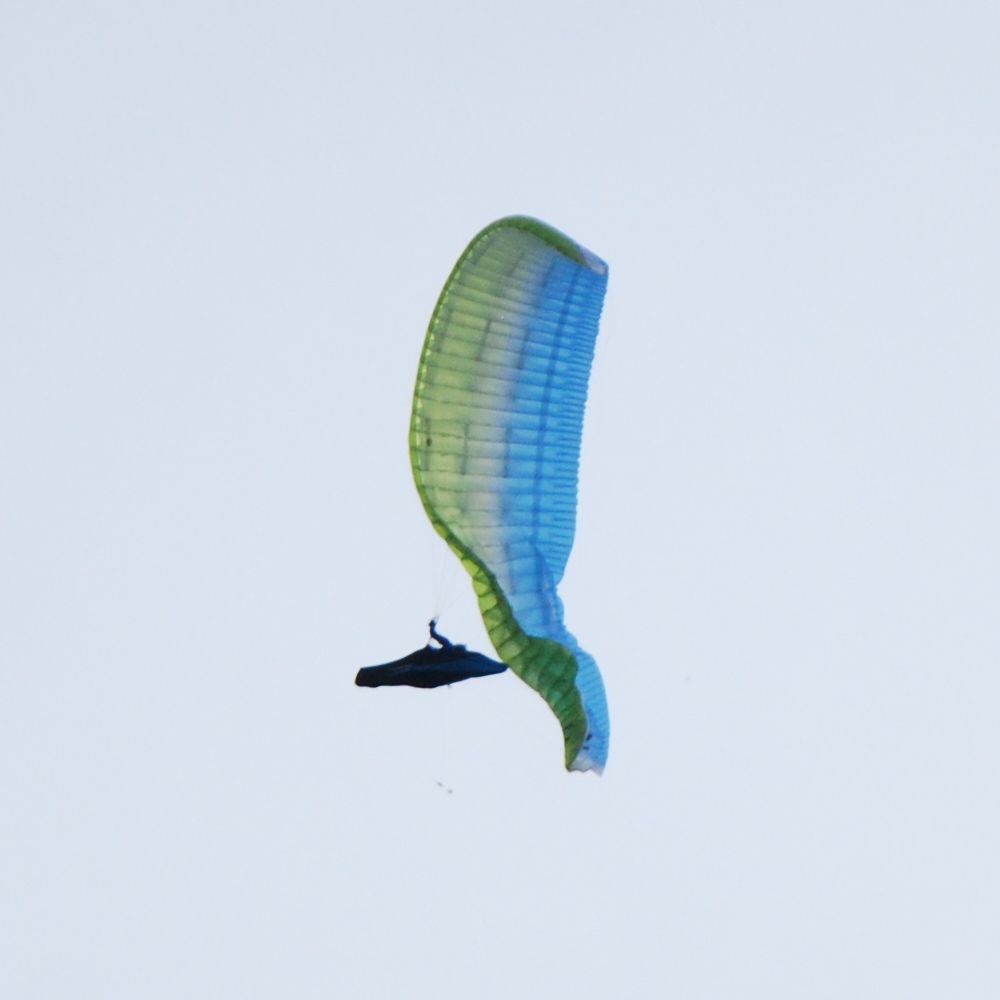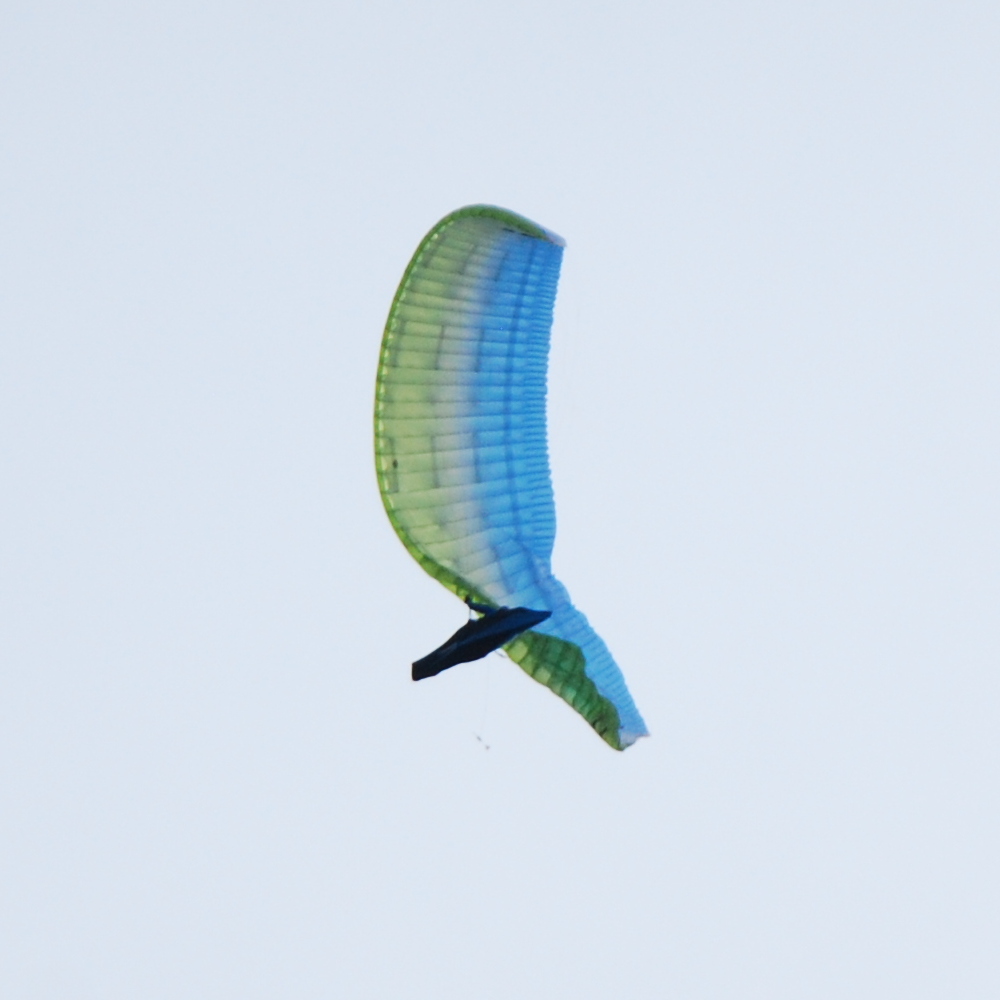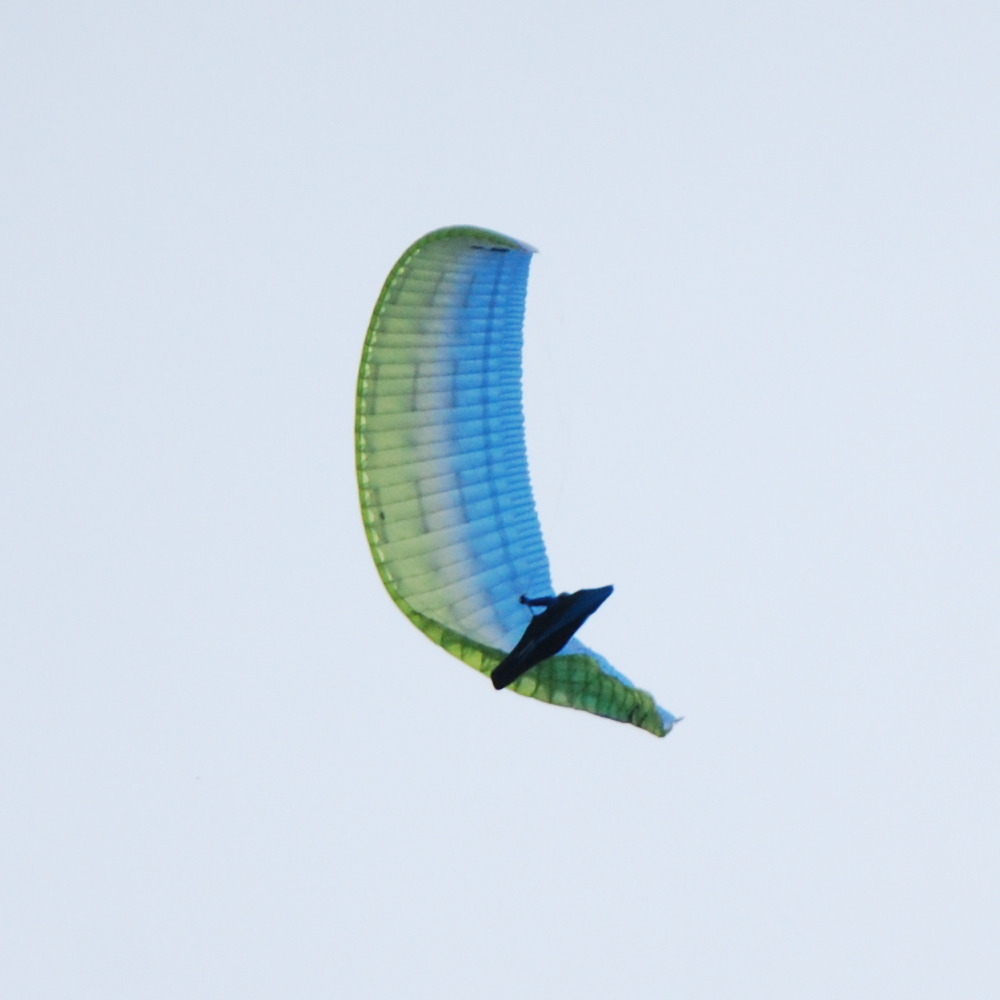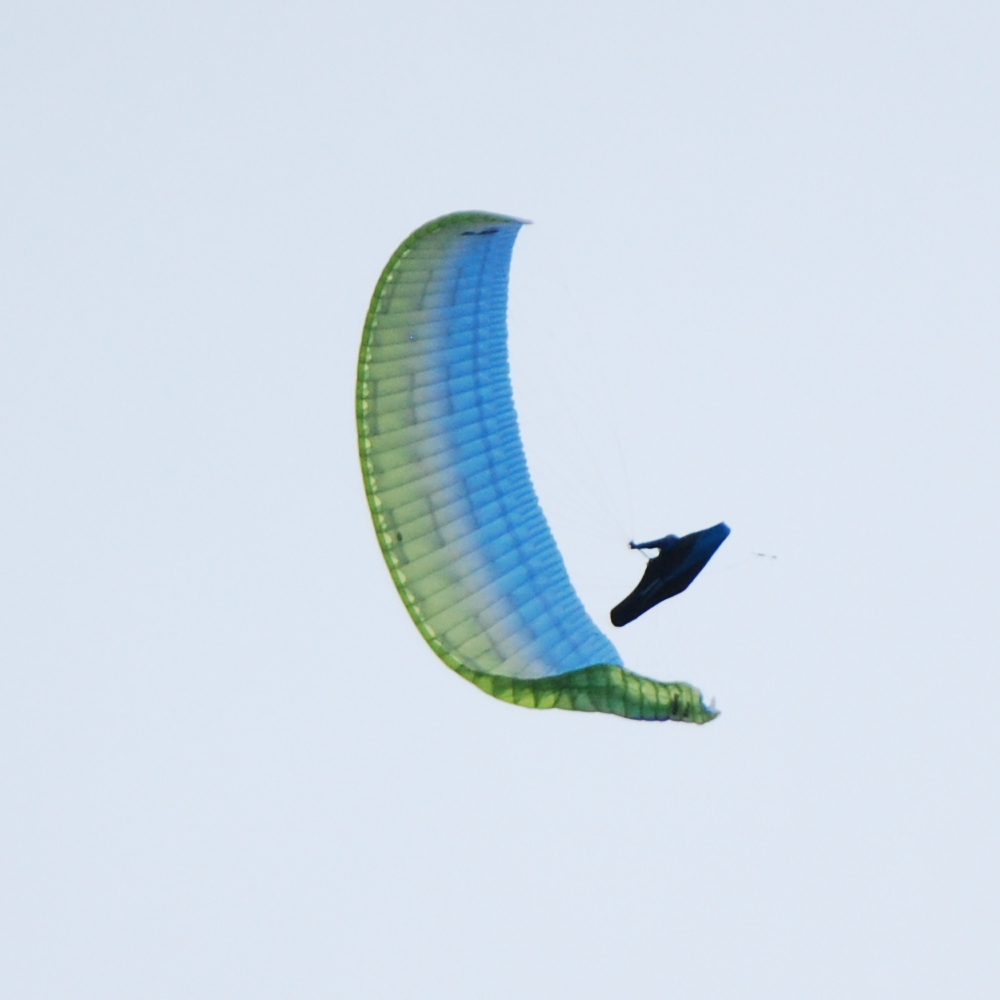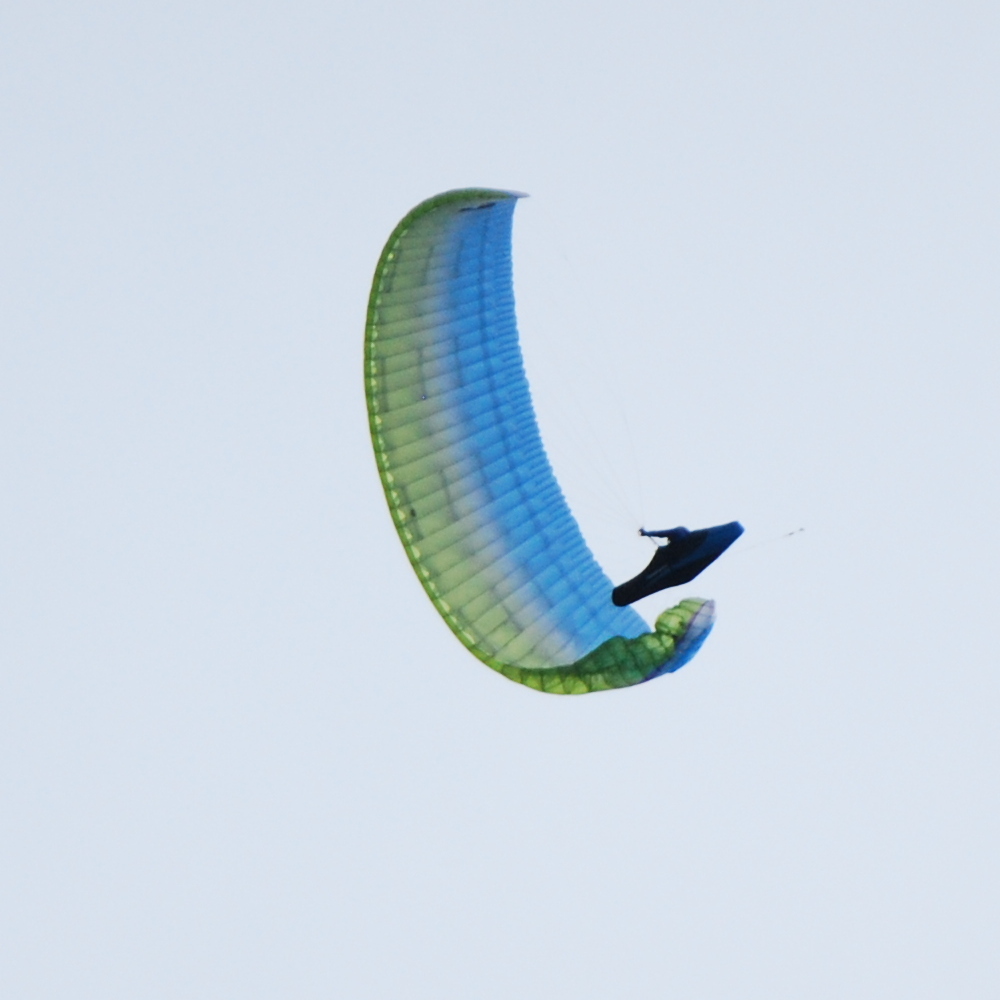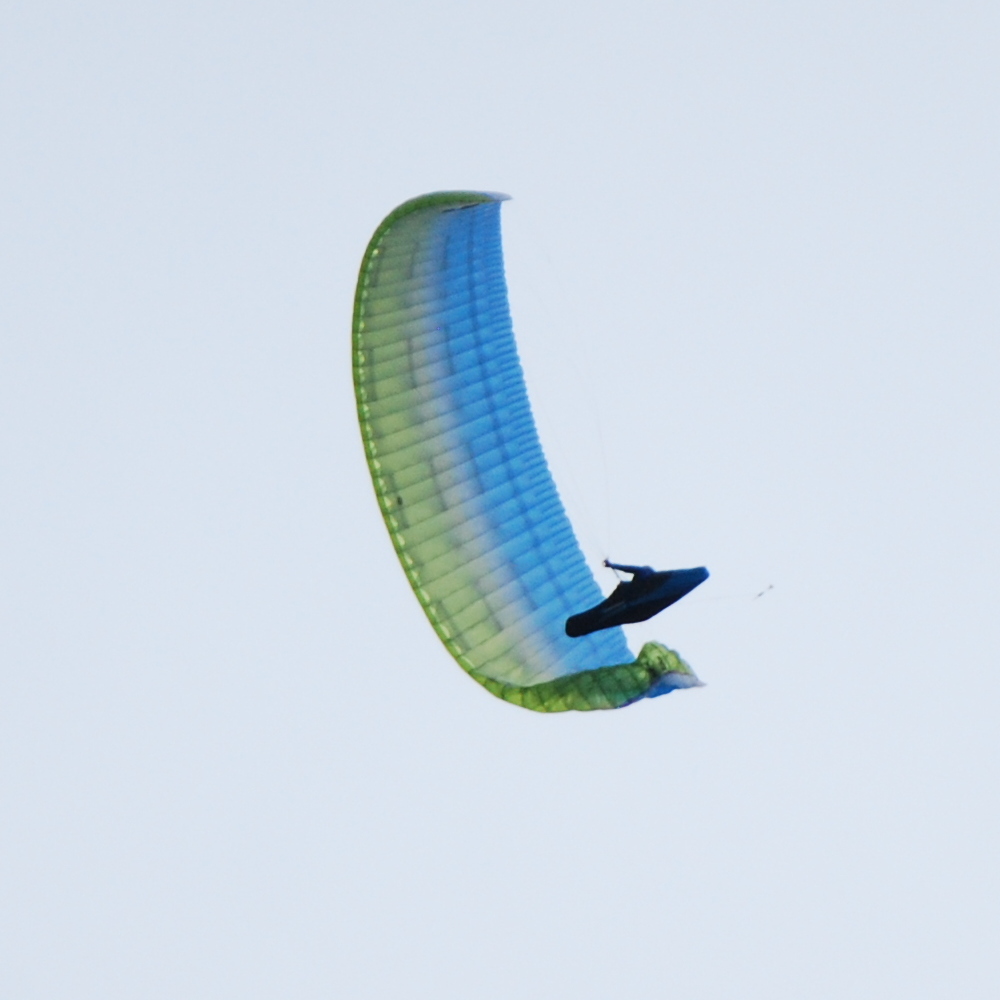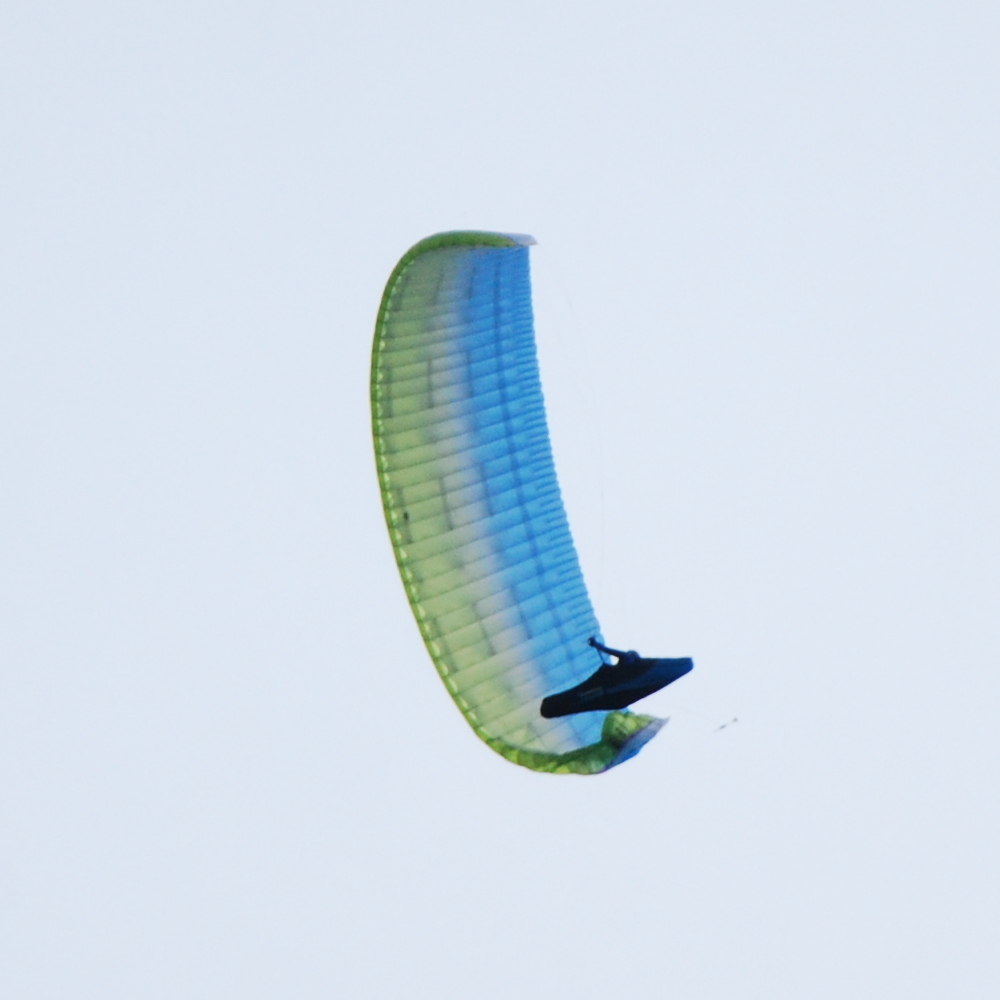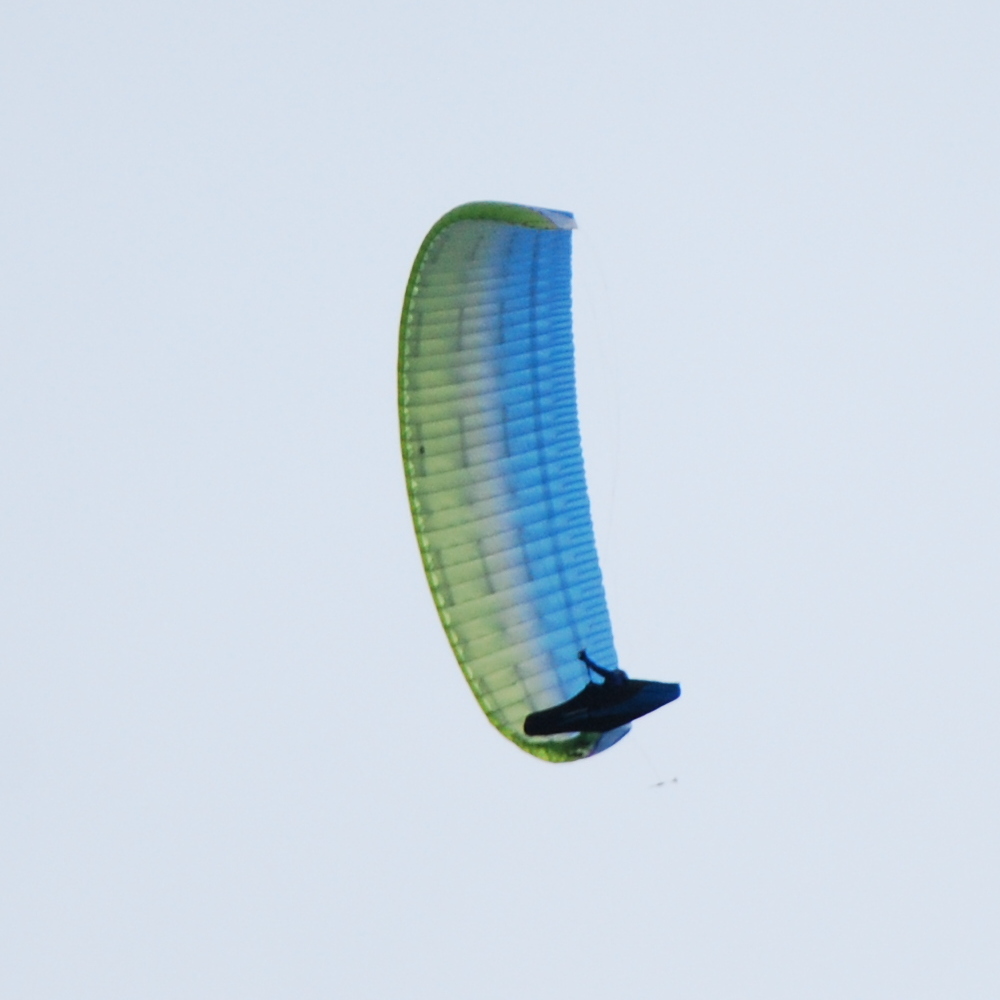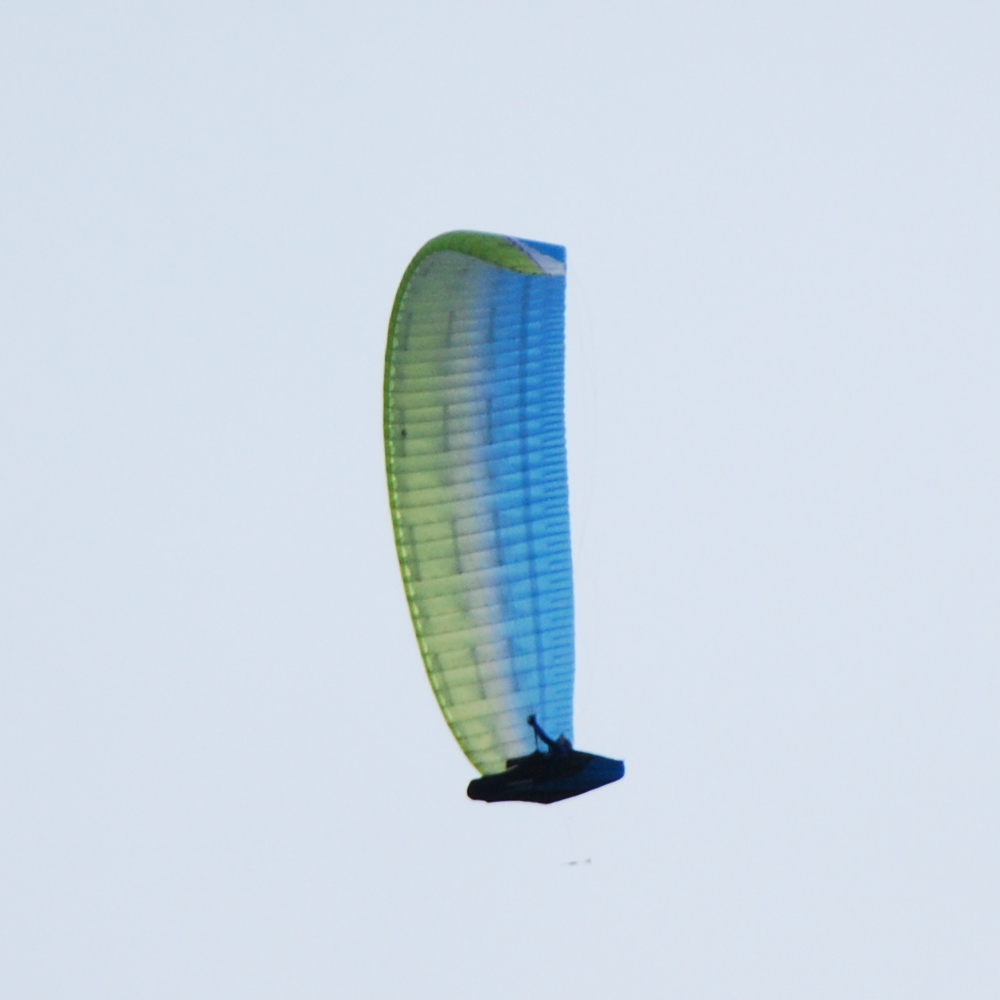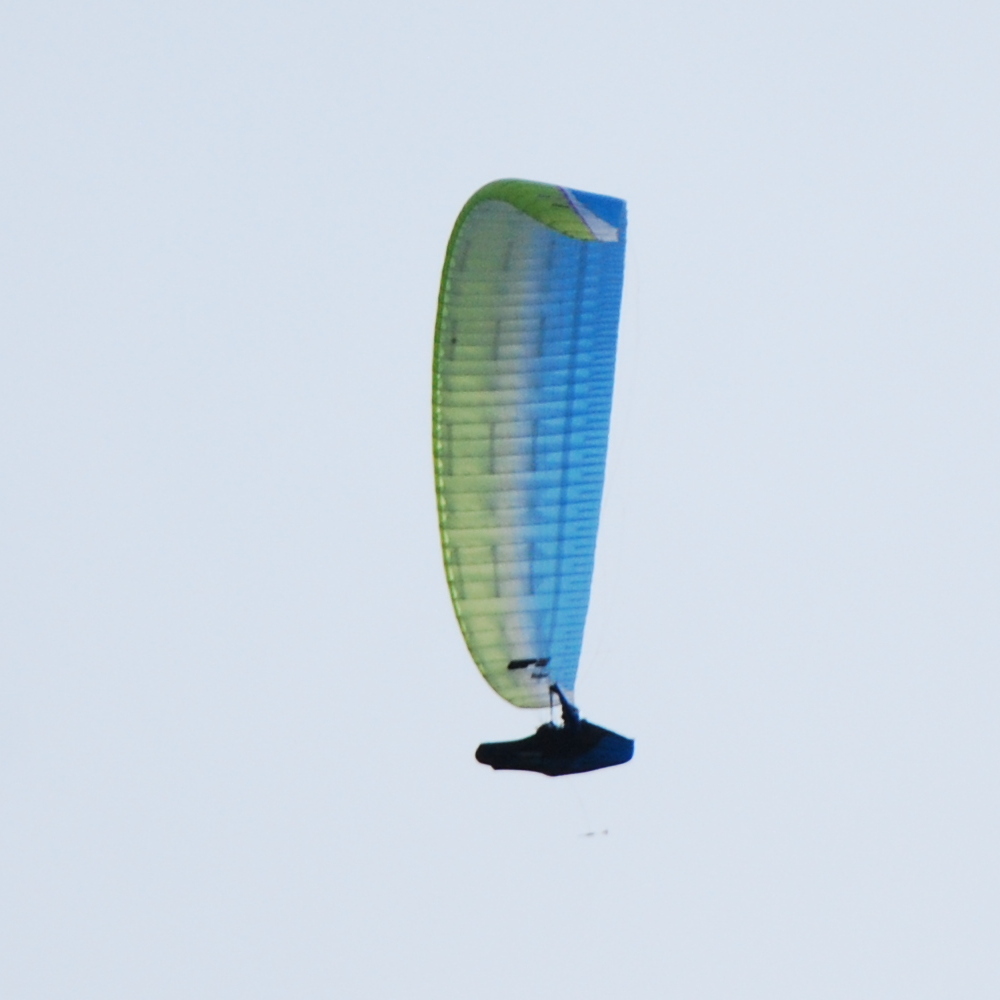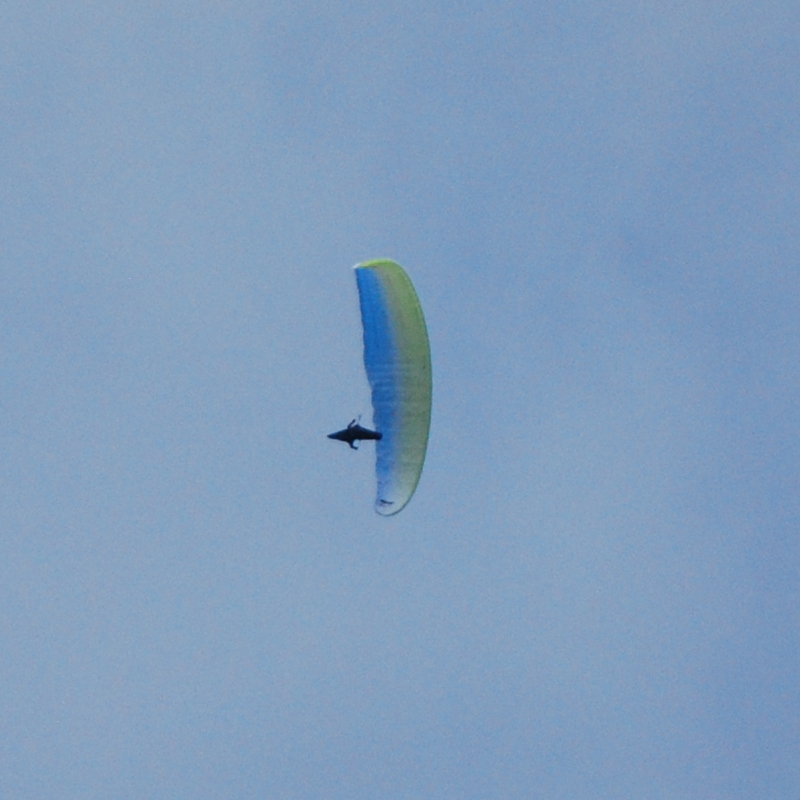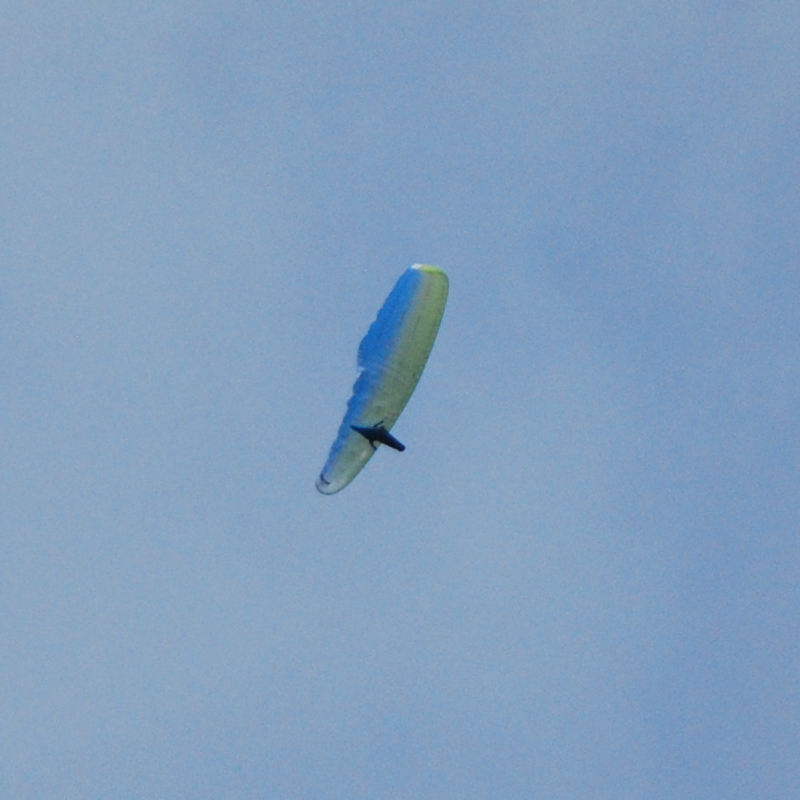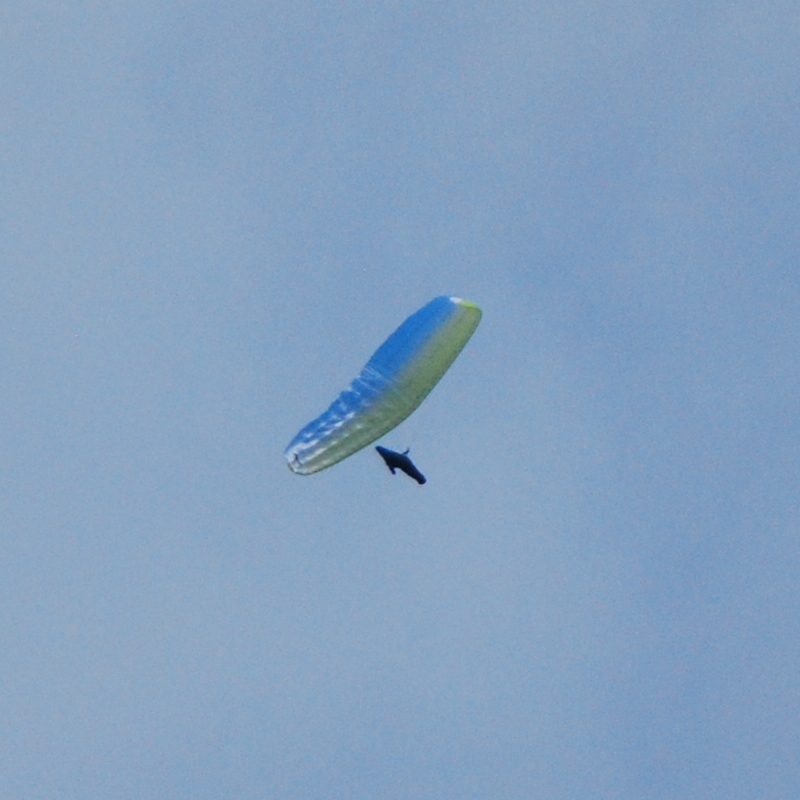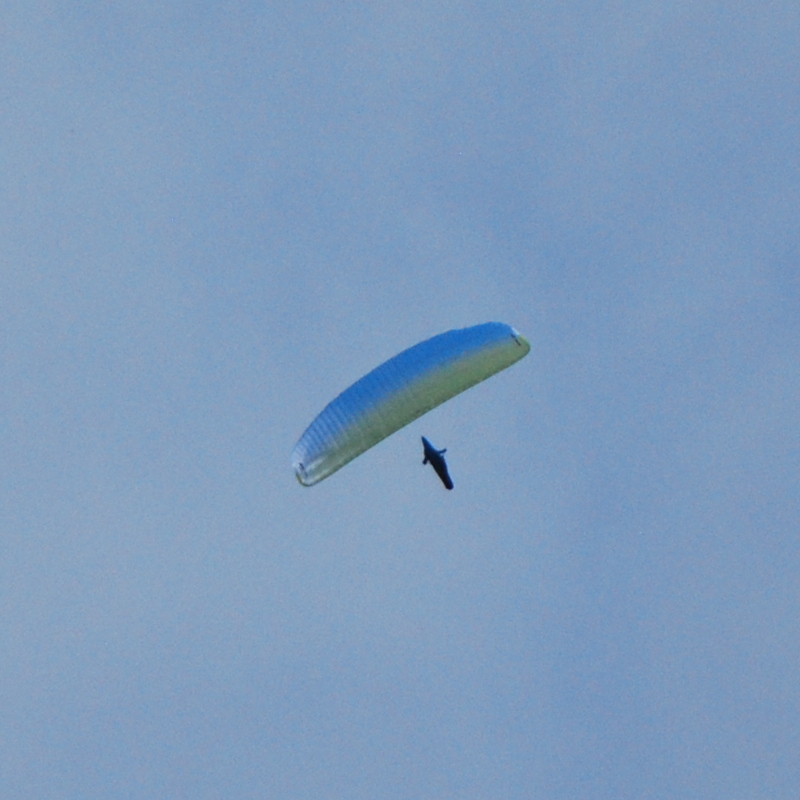The well-expected UP handling, stability and comfort reveal themselves in mid EN B class.
Construction
Risers
The traditional UP quality is here! Minimalistic, nicely designed and well-made, Kibo's risers may deserve only a single complain: the buttons instead of magnets for the brakes. In my case that buttons were so stiff that it was really difficult to buckle and to unbuckle them. It could also be a nice idea to plant a kind of handles for glider control at high speeds onto the rear risers, but it's only a wish, not a complain.
Canopy
Despite of modest positioning, Kibo proudly presents the typical UP pedigree: high quality of computation and craftsmanship which results in a smooth surface, especially near the leading edge. Kibo's planform is also very typical for UP gliders, with that specific, nice looking ears. The internal structure is way more advanced that you might expect in this market segment. The forward part of the canopy incorporates the already classical plastic rods which do not run deeply inside the chord, mainly simplifying the glider inflation and takeoff. The aspect ratio is rather high for such a glider: 5,7 , however the number of cells remains reasonable (49). In general Kibo's design appears to be well-balanced, bearing a certain ambition but staying within the reasonable for mid EN B class. With the mass of 6 kg, Kibo is definitively not a lightweight glider, but it's rather an advantage because this high mass is caused by using the heavy and long-lasting materials ensuring the high resistance to heavy use.
Lines
Some ambition again! The total number of lines and their overall length are modest, and a lot of unsheated lines are present. It's interesting that the low cascades are made of sheated lines but they are very thin, almost like the typical unsheated lines due to high quality pre-stretched dyneema. A perfect compromise for a glider which has a sporty mood but can undergo a heavy use.
Takeoff and groundhandling
Groundhandling
It's typical UP feeling which appears from the very first seconds of groundhandling. The canopy easily comes overhead and stops in flight position demanding just a minimal brake input to keep it above the head. The control efficiency is high, but there's plenty of space for possible errors like a dissymety in canopy position and/or pilot inputs. Kibo is, however, not a school wing because of (again!) high control efficiency and relatively dynamic behavior during takeoff.
Takeoff
All test flights swere made using winches in no wind to moderate wind conditions. In all cases Kibo was a joy to take off: technically simple, demanding minimal control, pardoning pilot mistakes and side wind. Despite the relatively high canopy weight, Kibo is almost similar to lightweight gliders during takeoff: the demanded effort on A risers is light, the same for the body work. The takeoff run is short.
Flight
Turn ability
Brakes efficiency
Brakes precision
Weight shift efficiency
There are no many paragliding brands accepting the high control efficiency and sharp reactions to pilot input in EN B class, especially in mid EN B. Fortunately, it's just the case for UP! Kibo's turn is definitely one of its strongest advantages. The reaction to brakes input is like we're flying a good EN C glider: it's sharp and comes in with no appreciable lag. There's also no slack, the brakes are efficient since the first centimeters of travel. All these things could appear too "hot" for a mid EN B wing, but Kibo is "foolproof" enough due to the high brakes travel and progressive increase in brakes efficiency. The brakes are very sharp but not extremely efficient at first 10-15 centimeters of travel, but there's much more efficiency when using more brake (30 cm and more). This kind of brakes tuning is perfect for thermalling: it's very easy to keep the glider in a steady spiral, but no problem again if you need to tighten the turn. Kibo may even experience some twist (10-15 degrees) when you roughly apply a lot of brake — a kind of behavior typical for agile EN C gliders but rare in EN B class.
The reactions to weight shift are also fast and sharp. The best way to feel them are wingovers: i got the bank angle over 90 degress from the first move! Of course a lot of brake input and weight shift was needed for this, but you cannot get such amplitudes using many of EN B gliders, even when trying to do it step by step, in many moves.
Comfort and feedback
Pitch dampening
Roll dampening
Airspeed feedback
Brakes feedback
Risers feedback
Feedback is another strong point for Kibo, fortunately without sacrificing the comfort. The recipe is classical: the changes of airspeed and brake effort come in almost instantly, but pitch and bank moves are soft and delayed. In general Kibo is a dynamic glider, but it still keeps the level of comfort normal for mid EN B. Despite of rather high AR the wing gives a "monobloc" feeling, it doesn't wobble or snake, the airspeed changes and the brake efforts variations being the main "data transfer channels". The risers feedback is slightly less marked but still very present.
Energy retention
Clearly above average for a mid EN B. Still not a problem for target group but very impressive even if you're an experienced pilot. Wingovers are very powerful, you may get over 90 degrees of roll in a couple of moves. The speed changes during wingovers are also very ample. Getting a 90-degrees pitch while exiting wingovers is a common situation for Kibo, but there's no problem because Kibo accumulates lots of speed, and the leading edge remains well loaded. The whole maneuver is easy to initiate and to control. It's interesting that Kibo can do very impressive landing swoops, gently converting the excess of speed into a nice straight line flight.
Performance
Glide
Max speed
Min sink
Perfect for mid EN B! High performance is rarely the must in this class of gliders, but performance wise Kibo is clearly better than average again. And even better: Kibo excels in different aspects of performance. The speed gain in accelerated flight is impressive: up to 13 km/h, a good result even for more advanced wings. The thermal efficiency is very good, the sink rate remains reasonable even in tight spirals. The glide is also decent. In general Kibo is not just a "learning tool", it's a good XC machine.
Dangerous flight regimes
Asymmetric collapse
Perfect! Kibo behaves as almostschool wing: it's technically and physically difficult to induce a collapse, and it reopens instantly after it occurs. The collapse generally goes not deeper than 15-20% chordwise, and the opening is so fast that it's difficult to examine all its phases even at video or continuos photo shooting. The course change is typically below 45 degrees, the surge is almost not present, he height loss is around 5 meters only.
Frontal collapse
Same as asymmetric collapse, except of symmetry ;) The same difficulties while inducing the collapse, the same almost-instant reopening. The forward surge during reopening is around 15-20 degrees, the height loss is below 10 meters.
Accelerated asymmetric collapse
Good. And very different from non-accelerated collapse, mainly because of relatively high speeds and elevated AR. The behaviour durring collapse and reopening is more classical: the collapse develops depply into chord, and the reopening is gradual from center to ear. The course change is around 90 degrees, the surge is also well marked, around 30 degrees.
Spin out of thermal turn
Good, but not perfect... because it's just possible to perform this maneuver. Many of EN B gliders have too much brake travel and too much effort near the stall point making the spin almost impossible. But Kibo allows this trick, however it starts at a very long brake travel and with high brake effort. I suppose that it's almost impossible to induce this maneuver occasionally, you need to insist a lot for getting in. The wingtip stalls the first, the center part of the wing still may continue to fly normally. The brake effort decreases well just before stall, it's difficult to miss it. The regime develops in a smooth manner, you have around one second to recognize the regime and to rise the brakes for exiting back to spiral in a safe and comfortable manner.
UP did it again! Despite of being a glider from 2016, the Kibo is still very concurrent in its class. Kibo's strongest point is its conformity to the EN B philosophy. Okay this glider has very efficient brakes, but still not above the reasonable for mid EN B (the Phi Symphony has more effective brakes which is strange for EN A label). Okay this glider has dynamic behavior, but again within the limits of admittable. And, wow, it has plenty of performance! The only restraint: this is not the glider for the very beginners. You need to have already some piloting skills to feel good while flying Kibo. I suppose that 30 hrs of airtime will be enough. It's not a problem of passive safety — Kibo is a very safe and fair glider. Some skills are needed to use the Kibo at 100%... and to enjoy it at 100%!
Pros
- High control efficiency
- High general performance
Peculiarities
- Control efficiency at the limit of allowable for mid EN B
Thanks
Many thanks for Daria Krasnova and UP for offering a glider for testing.
Copyright
- Foto: I.Tarasova
Technical data
| Flat area, sq. m. | 27 |
| Flat A.R. | 5,7 |
| Flat span, m | 12,5 |
| Projected area, sq. m. | 22,7 |
| Projected A.R. | 4,1 |
| Projected span, m | 9,7 |
| Cells, total | 49 |
| Cells, closed | 14 |
| Flattening, % | 16 |
| Lines height, m | 7 |
| Lines length, m | 278 |
| Lines scheme | A2A'1B4C3 |
| Takeoff weight, kg | 85-110 |
| Glider weight, kg | 5 |
| Size | M |
Materials and components
| Upper surface, leading edge | Porcher | Skytex 38 Universal |
| Upper surface except leading edge | Porcher | Skytex 38 Universal |
| Bottom surface | Dominico | DOKDO 30 DMF (WR) |
| Ribs, supported | Porcher | Skytex 40 Hard |
| Ribs, unsupported | Dominico | DOKDO 30 DMF (WR) |
| Lines, upper cascades | Liros / Edelrid | DC120 (Dyneema unsheathed) / 8000U-130/090/070 (Aramid unsheathed) |
| Lines, middle cascades | Edelrid | 8000U-130 (Aramid unsheathed) |
| Lines, main (lower) cascades | Edelrid | 7950-200/150 (Dyneema sheathed) |
| Lines, brakes | Cousin / Edelrid | 989-2,1 (Dyneema sheathed / 8000U-130 (Aramid unsheathed) |



